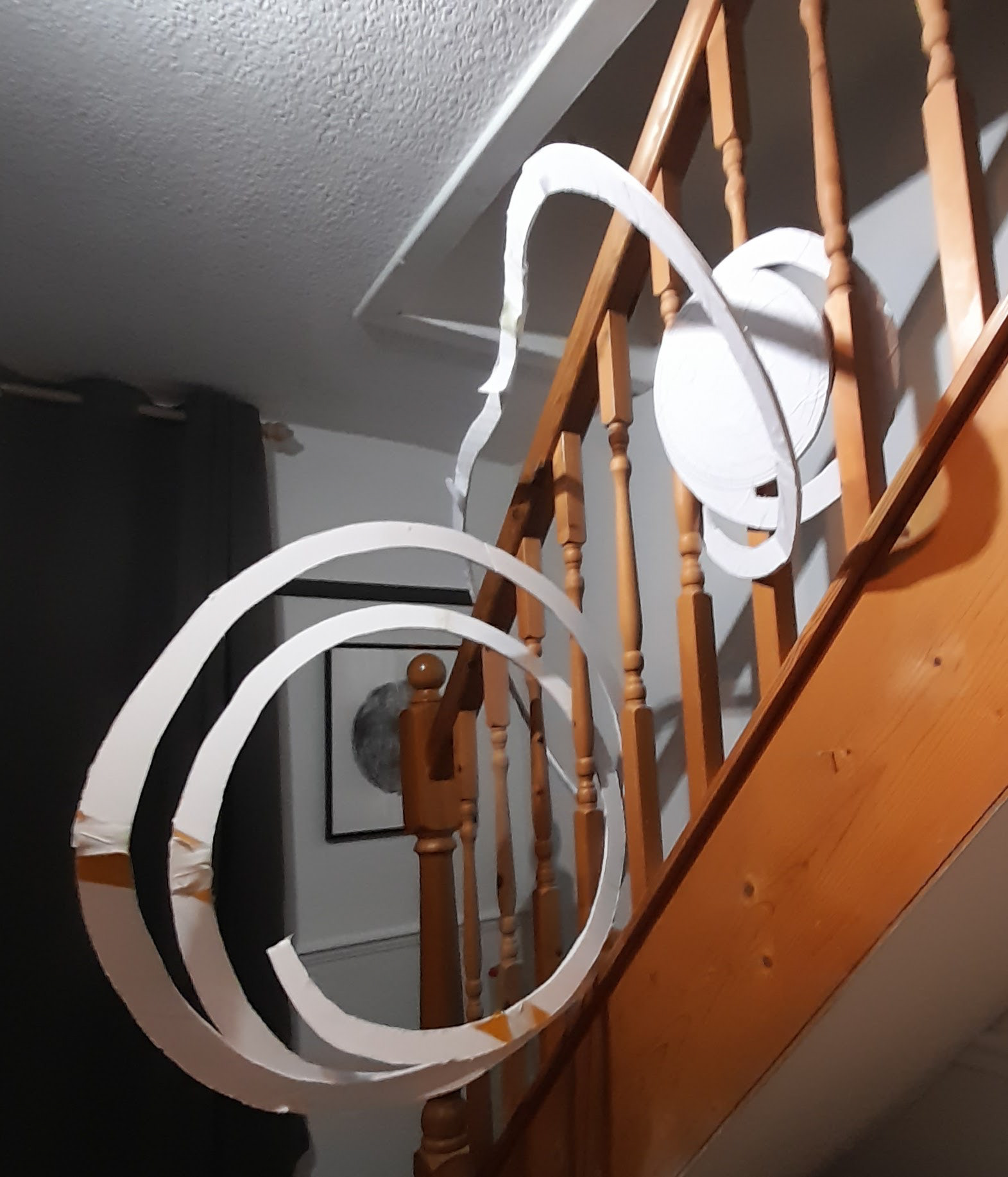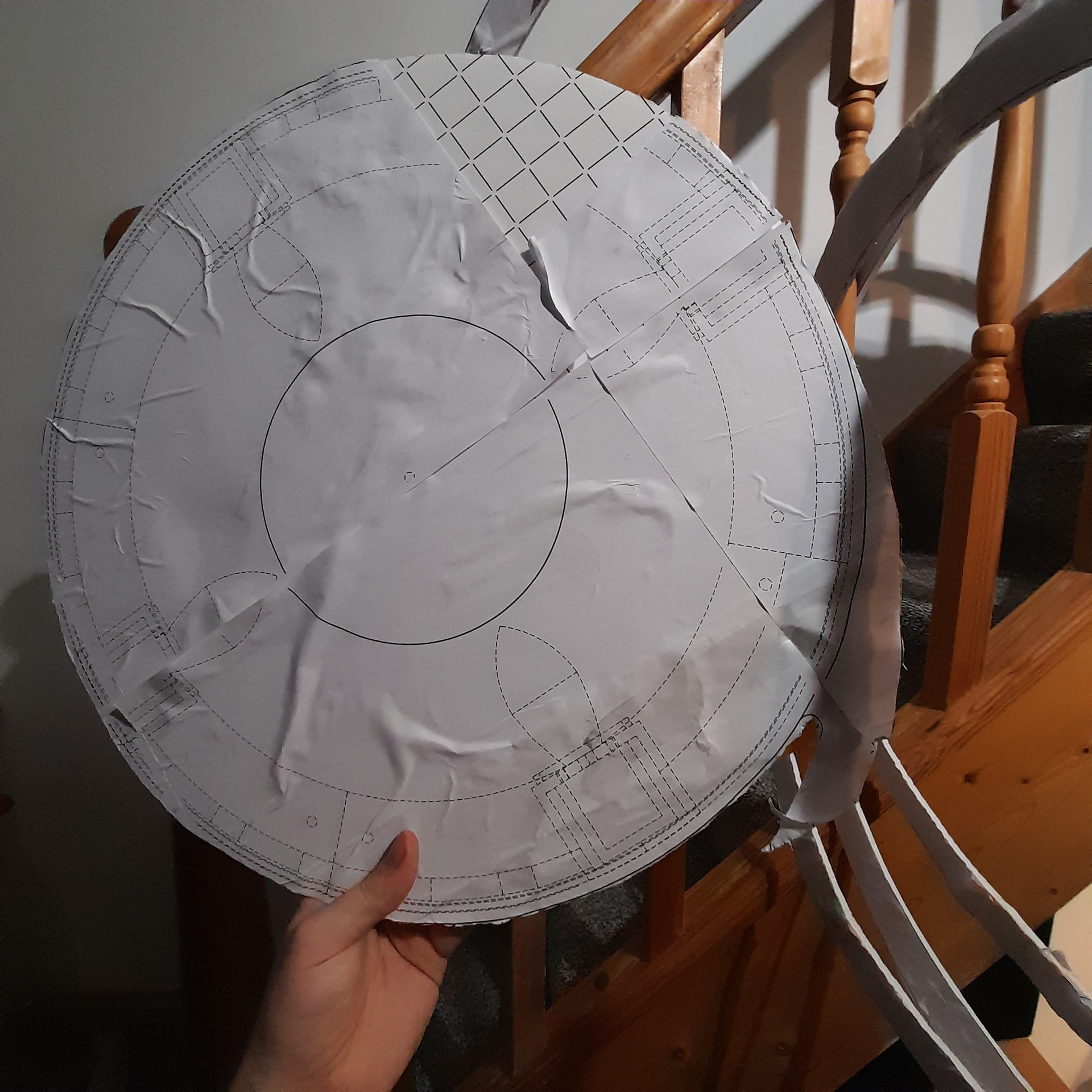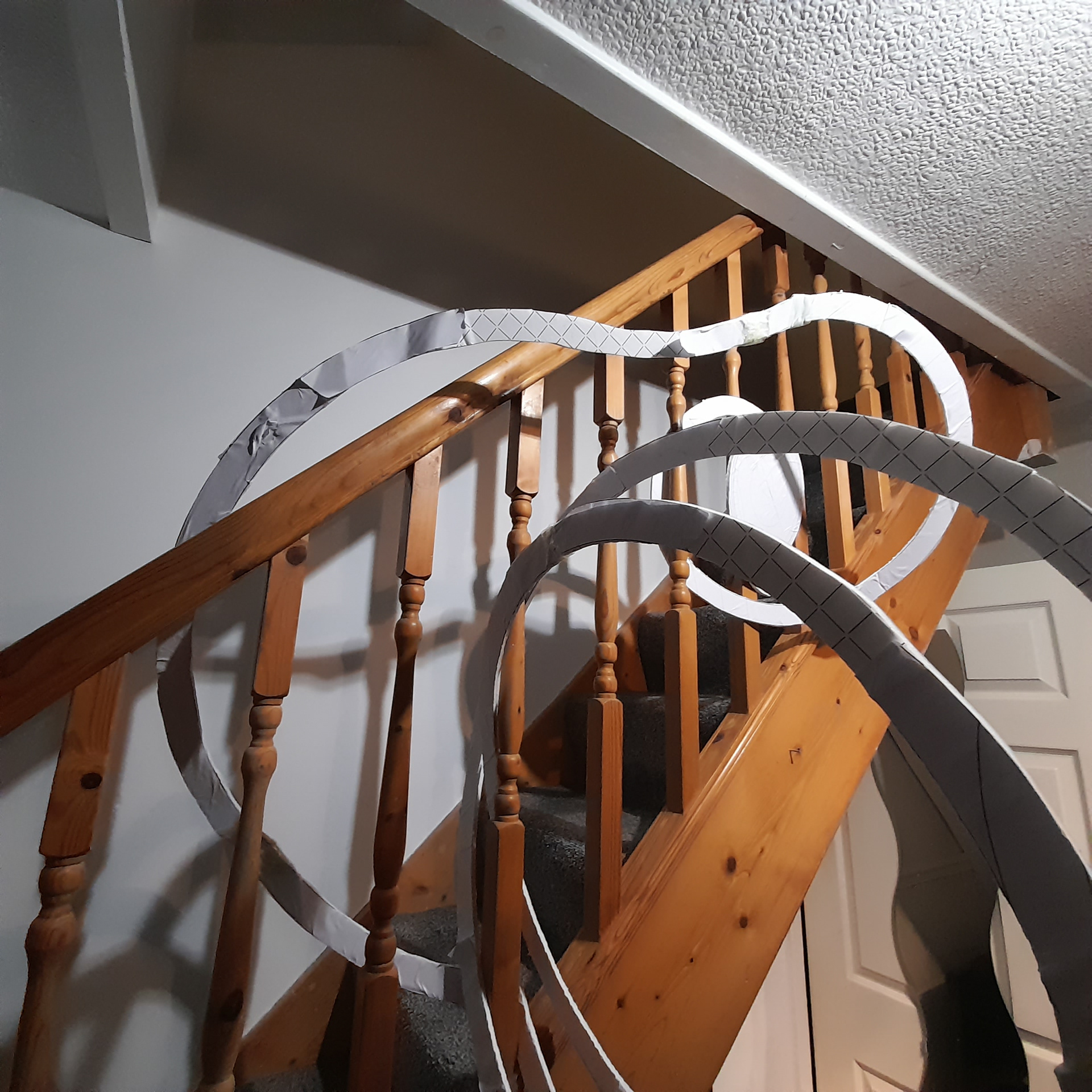The frontal and parietal lobe makes up half of the cerebral lobes. Both relate to the term velocity in separate ways. Firstly the frontal lobe is associated with how the person brain can control, organise and plan. Therefore being able to complete the action in which they set out to do. While doing so the person can display their concentration by voluntary movement. Such an example can be considered as finger tapping. This example can be used to examine motor control (coordination and stabilization). Hence what is being measured in this examination is the rate of change in the finger, meaning the velocity. Whereas the parietal lobe function is linked to sensation. This involves the senses and how they cause the person to react in certain spaces. Furthermore, this relates to proprioception which means being aware of your body position and movement. Proprioception can be called the sixth sense because of how it makes the person know their in control without actually letting them know. For example self-movement, you don't tell yourself to move you naturally do it. There is now voice command it is a natural part of how you function. Proprioception involves using the 5 senses and the muscles of the body to quickly adjust to your surroundings. Hence there could be a sudden change in the weather and the body needs to react quickly. This is where proprioception would be involved because the rate at which your body adjusts can be considered in terms of velocity by the work rate your body forces itself to change. However, proprioception can be hard to explain at times when something doesn't seem right. If a person were to be anxious or suffer when brain injuries. This could create ''False internal stimulations and external objective stimulations'' which ''Affect perception together, the changes in their relative strength will result in the consistence, breakdown and re-consistence of the five senses’’ (Huang, 2019).
Before I go on to explain how the skull protects the brain (this include the frontal and parietal) I want to clarify the relation between the word snake and the frontal lobe. The frontal lobe is part of the brain therefore it is part of the nervous system. The spinal cord which is part of it helps transfer sensory information throughout the body. This cord also makes up part of or is situated with the vertebral column. A snake has a vertebral column, this is what makes it so flexible. A snake can side wind or sidewinding. Which is a method of movement that allows the creature to move across loose surfaces (desert dunes). This side winding is sought of a wave type of motion similar to how a sine wave would appear. The most common example of this is from the Cerastes cerastes/desert horned viper. Neural activity in the body or even the nervous system can be displayed by neural oscillations. which involves gathering data from local field potential (electrical output from cells). These create rhythmic/repetitive patterns that are also displayed, when monitored, like sine waves as well.
The word vertebrate means joint of the spine which comes from vertebratus. This Latin word is found in the natural history encyclopedic written by Piny the elder. The author included anything that he fought necessary to be known about the roman empire in this book. He goes into great depth about such things as colour and its significance at that time. He describes the importance of the colour Tyrian purple and how it was a much sought after commodity. The reason was that it was a laborious task to extract the dye from thousands of sea snails. The snails that came under the classification of the muriciade family were the prime source of the dye. A certain characteristic of this species was that the shell had a whorl shape which I will refer to later. However, there was one most used snail which was the Bolinus Branddaris. A skull and shell have the same purpose of protecting the body. The shell protects the entire body whereas the skull protects the occupants' awareness of their body. Eventually, during the production of the Tyrian dye, the snails that were used became an exotic item not because of their low numbers but because of social impact. The reason being is described in the following:
‘’It is traditionally associated with royalty and nobility because Tyrian purple was only affordable for the elite. During the Roman empire. ‘The purple’ meant the roman emperor, a term derived from the colour of his robe. Byzantine empresses gave birth in the purple chamber and porphyrogenitus (born to the purple) described an emperor who gained the throne by inheritance and not force.’’ (Coles & Lander, 2018, p.4).
An exotic item is something interesting in terms of how it presents an unusual representation of itself. Exotic is anything foreign to what we include in our taste and interest or what we usually perceive. In the same book, Piny the elder also describes some questionable beliefs in animals that don't exist. He describes a creature called Amphisbaena (double-headed snake). This animal is believed to be originally part of a greek myth but due to the massive roman expansion around the world at that time, the Romans were prone to adopt other stories in their culture. A big business at that time was the trading of exotic animals. By creating the belief of such creatures as a double-headed snake would cause interest to search for it. Yet because the animal wasn't real, the searches or traders would settle on other animals instead, therefore causing the business to continue. The symbolism of a two-headed snake is similar to other aspects of different religions. For example in eastern catholicism, the bishop staff known as the crosier can have two serpents spiralling the pole and facing each other at the top. The symbolism, in this case, relates to the serpent Nehushtan.
Nehushtan was a snake figure elected on top of a pole/staff that was used by Jews to repent to god (after they fled Egypt). This snake figure is different to when Moses and Aaron appeared before the pharaoh and turned Aaron staff into a snake. This reminded me of the Greek god Asclepius who was the deity of medicine. The god is displayed in various art mediums carrying a pole with a snake wrapped around it. This is known as the rod of Asclepius. In modern times the rod is used as a symbol by many health care organizations because:
‘’ The snake’s sloughing its skin off sort of means the renewal of life and rejuvenation. Throughout history, the snake has been attributed several features such as power, speed, farsightedness, good luck, healing, health and long life which are associated with the occupations that offer health and it highly deserves being the symbol of health and medicine considering the fact that even its poison is healing for the humankind.’’ (Güner, Şeker and İzmir Güner, 2019. p.3)
Snakes can use concertina locomotion, which is climbing vertical surfaces by targeting certain muscles to contract around the vertical shape so they push or pull the rest of their body upwards. This movement is somewhat similar to what is displayed on the rod of Asclepius or even the bishop staff. Side note concertina means compressing and folding, whereas locomotion means the ability to move from one place to another. Eadweard Muybridge did numerous photography collections that document the term locomotion in animals. Concertina locomotion is not an easy term to remember but Lasso climbing is. The image of a snake wrapping itself around a tree for example somehow brought forth a reminder of how muscle spindles are affected by velocity in the body especially by how they monitor the change of stretch direction when moving. (I'll provide an image afterwards).
Earlier on I wrote about the term exotic. I am now going to explain what is now considered exotic in modern times. Many people keep pets that are considered exotic, since I've been writing about snakes a lot, I did some research into what is sought after. It turned out that small albino snakes are a common pet to have, yet an albino cobra is an extremely rare animal. Thus it becomes a more wanted exotic feature for many collectors but owning a cobra is illegal in a lot of places. Which makes the albino cobra have a mystic like surrounding about it. Albinism has always had a taboo about it. Bradbury-Jones explains how:
‘’In extreme (but not infrequent) cases, superstitions and traditional beliefs about albinism can lead to violent assault and murder. Body parts of those with albinism are used in witchcraft-related rituals that typically involve them being made into charms that are believed to bring wealth and good luck’’ (2018).
I find it interesting how the idea of wealth is brought into the term albinism. The reason is in the second jungle book written by Rudyard Kipling There is a story (The king's ankus) about the idea of wealth and albinism. Kaa the anthropomorphic python convinces Mowgli (the boy who can speak to animals) to steal a treasured item from a deep cave that is protected by an old cobra.
It turns out the old cobra is extremely pale in appearance and it isn't implied if it is because it has spent a significant amount of time in a dark cave or if it has always been that way. ‘’The brightest of whites ironically comes from a black mineral’’ (Coles & Lander, 2018, p.145). The snake is instructed by its owner/master (who is long dead) to kill whoever tries to steal anything from the treasure horde. When Mowgli pinches the king ankus, the cobra strikes but no longer has venom because of its age but still warns Mowgli that the item is death. what the cobra means is that the king ankus will draw the attention of other men who will kill for it purply because of greed. Anyway, Mowgli doesn't die since he loses it. But I think it is a suitable example of how albino body parts are considered to be good luck or bring wealth even if it means killing for them.
The jungle book takes place in India and is primarily about a boy who can understand animals. It was made into a Disney adaption which has a common link with another Disney film. In bed knobs & broomsticks, the main characters end up on an island full of talking animals (Anthropomorphism) that was first discovered by a Lascar. A lascar is an Indian sailor. The link here is an Indian character that can understand animals and animals can talk back to them. Also, the film Bed knobs & broomsticks include a song called Substitutiary Locomotion. This relates to the term Concertina locomotion which I described earlier.
A kings ankus can also be called an elephant goad or a bullhook. A bullhook is a spear-like weapon with a curved blade (hook) on the side, near the tip of the spear. Although it is a weapon it can also be used in the handling of elephants. In western Catholicism, the bishop staff is styled after a shepherd crook which hooks animals, implying a similar meaning as to how the bullhook is used to tame animals. The hook on the crosier in western Catholicism also has a whorl shape to it implying how this shape unintentionally has significant importance. another factor I want to point out is that a snake is also able to turn its body into a whorl shape. Maybe it's just a coincidence but I thought it would be worth knowing that the whorl shape had a recurring link throughout this word section.
Bibliography
Alexander, R.M. (2013) Principles of Animal Locomotion. Course Book. Princeton, NJ: Princeton University Press. doi:10.1515/9781400849512.
Bradbury-Jones, C. (2018) Beliefs about people with albinism in Uganda: A qualitative study using the Common-Sense Model. Available at: https://www.ncbi.nlm.nih.gov/pmc/articles/PMC6185843/ (Accessed: 14th December 2021)
Brookman, P. and Braun, M. (2010) Eadweard Muybridge. London: Tate.
Coles, D. and Lander, A. (2018) Chromatopia : an illustrated history of colour. New York, New York: Thames & Hudson Inc.
Jaffer, A. (2015) Lascars and Indian ocean seafaring, 1780-1860. Suffolk, [England: The Boydell Press.
Güner, E., Şeker, K.G. and İzmir Güner, Ş. (2019) ‘Why is the Medical Symbol a Snake?’, Istanbul Medical Journal, 20(2), pp. 172–175. doi:10.4274/imj.galenos.2018.65902.
Huang, W. (2019) A Psychological Perspective on Extrasensory Perception. Available at: https://www.researchgate.net/publication/332699101_A_Psychological_Perspective_on_Extrasensory_Perception (Accessed: 14th December 2021)
Shapiro, E. (2017) Creative wax carving : a modern approach to an ancient craft with 15 jewellery projects. New York, New York: Lark Crafts, an imprint of Sterling Publishing Co., Inc.
Above is an image that explains what a muscle spindle is
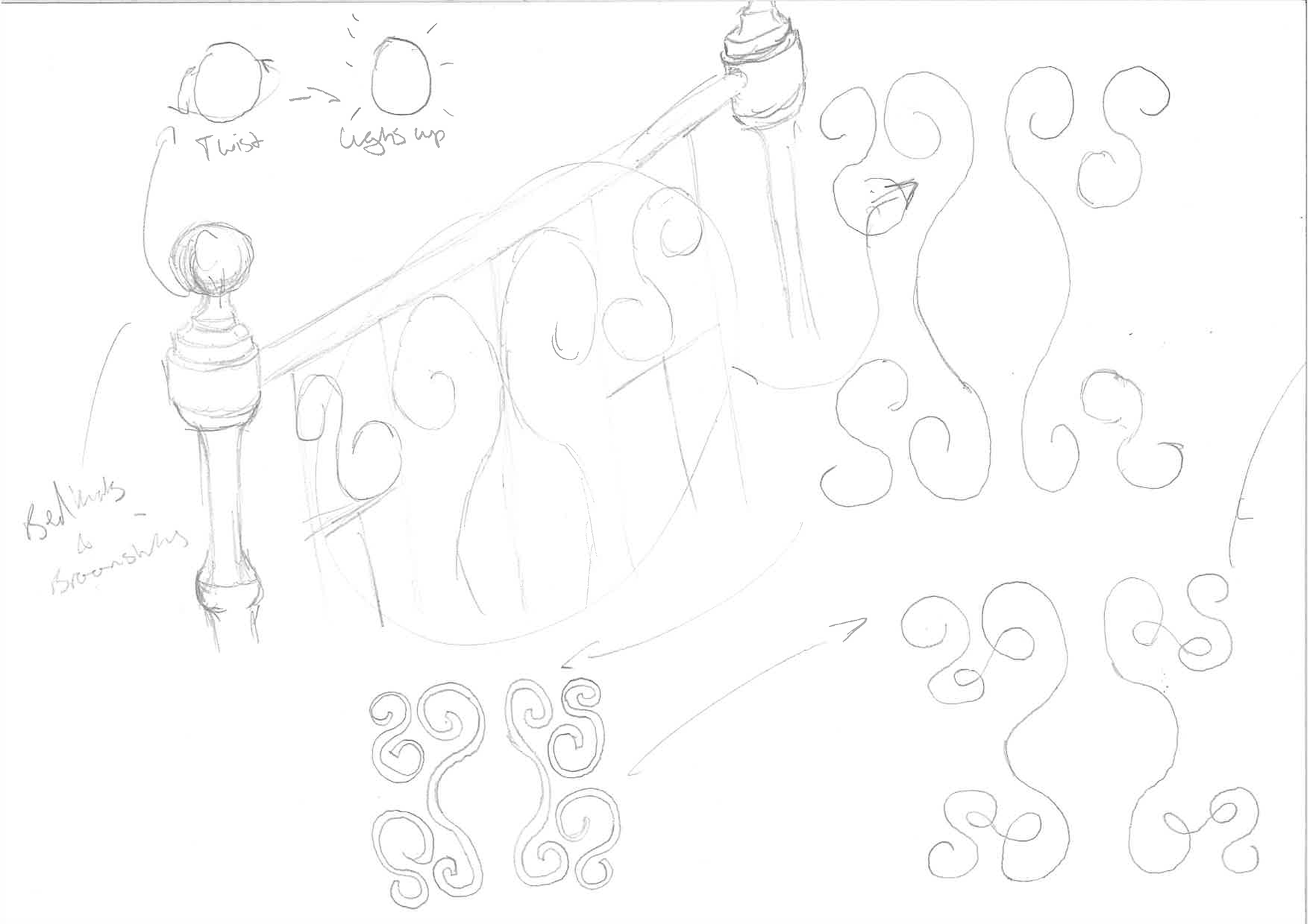
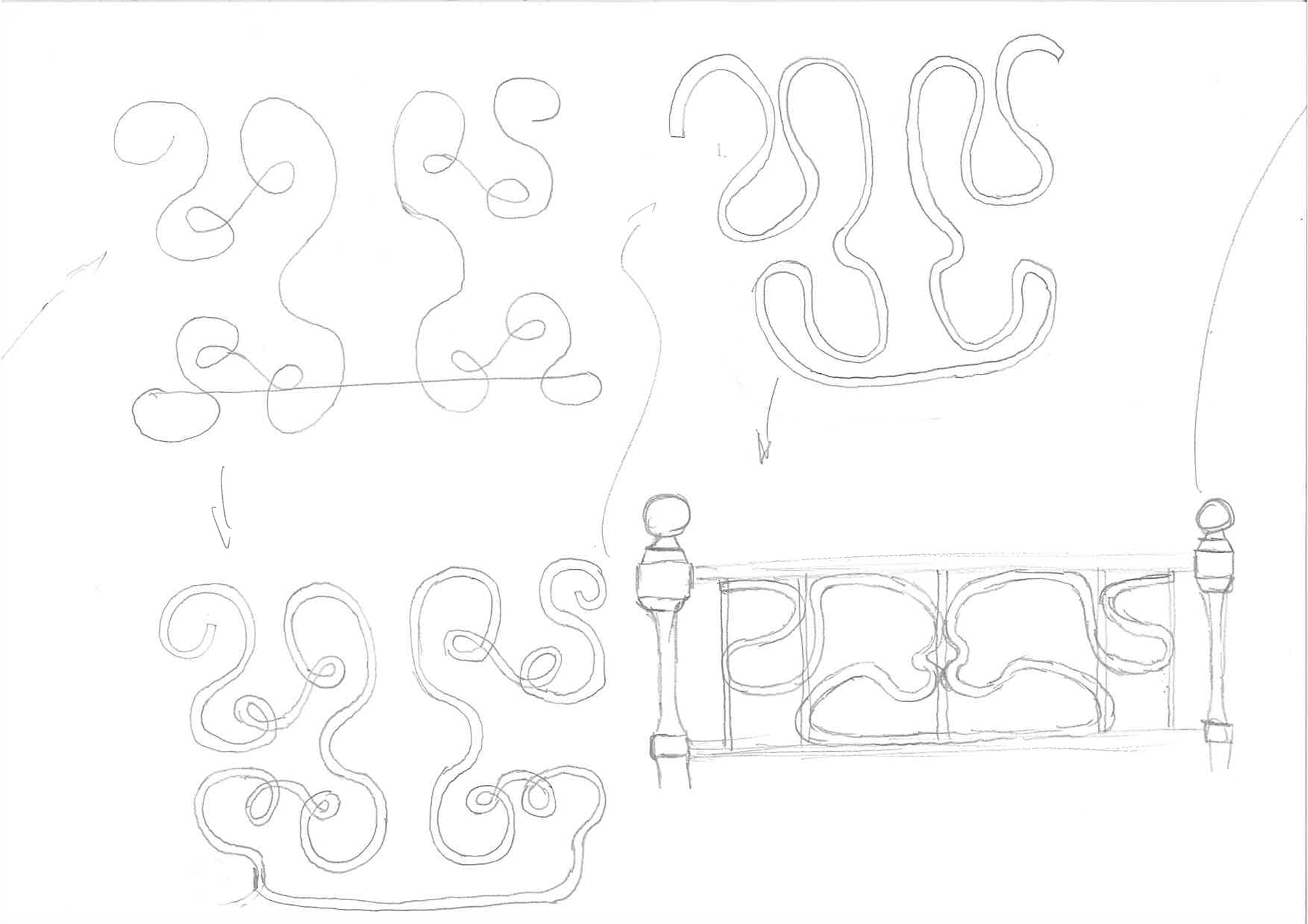

In Bedknobs and broomsticks, the newel cap on one of the bed railings lights up and takes the main characters away. For this project, I will be focusing on making a light design but instead of being on a bed, I'm going to focus on making a light for a staircase. The idea is that the snake-like body will be wrapped around the spindles as it goes upwards. Closely representing the local field potential.


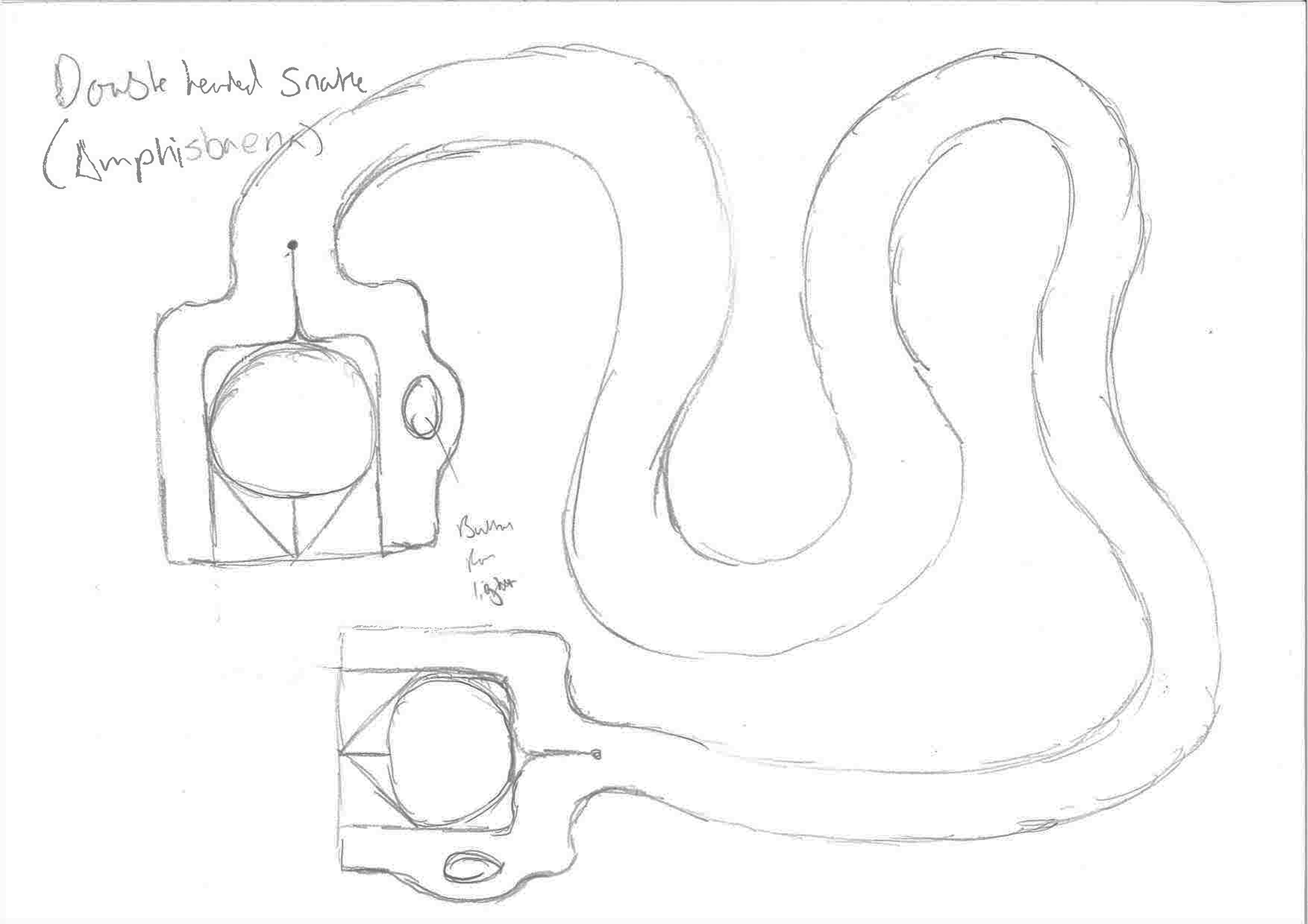
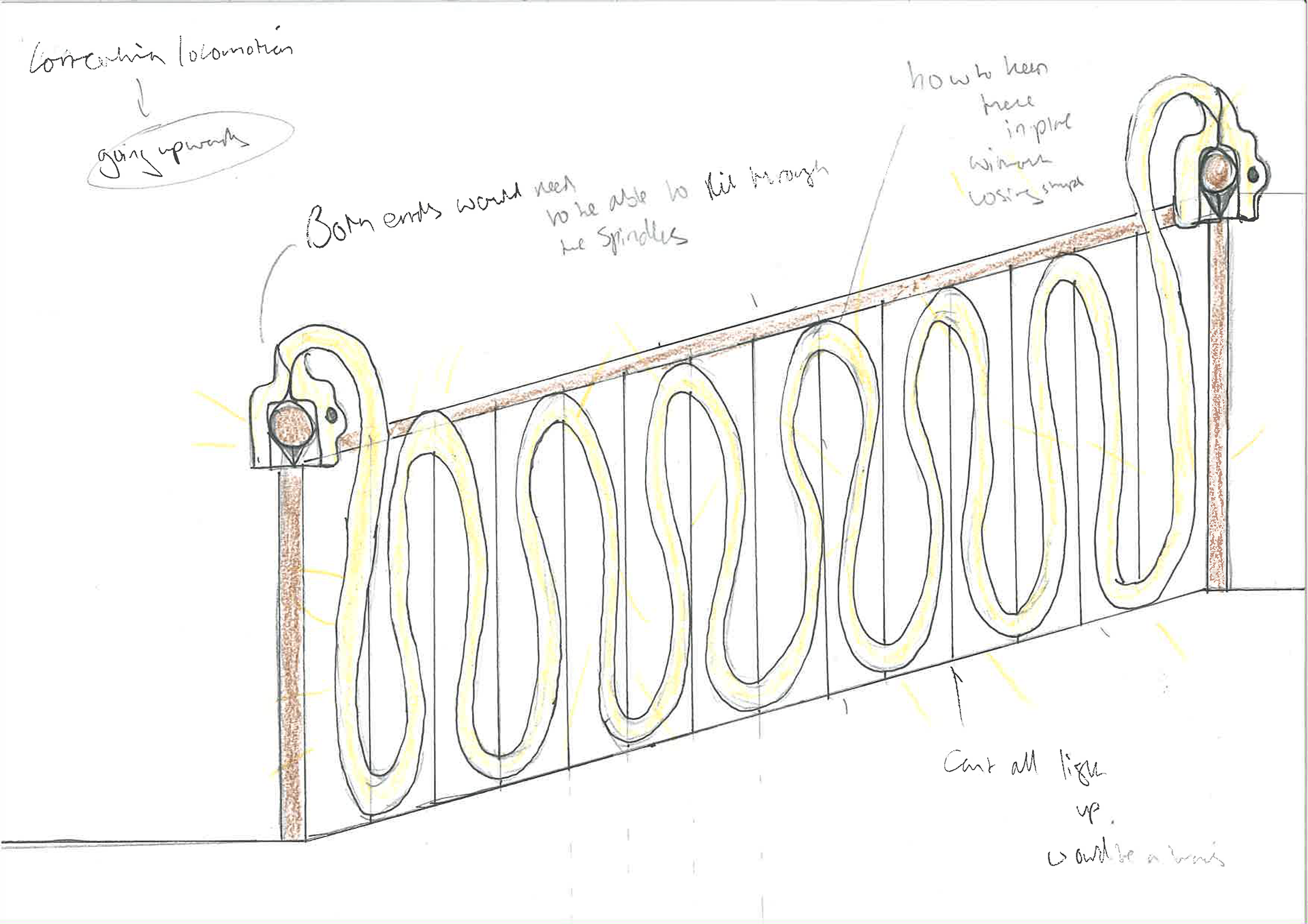
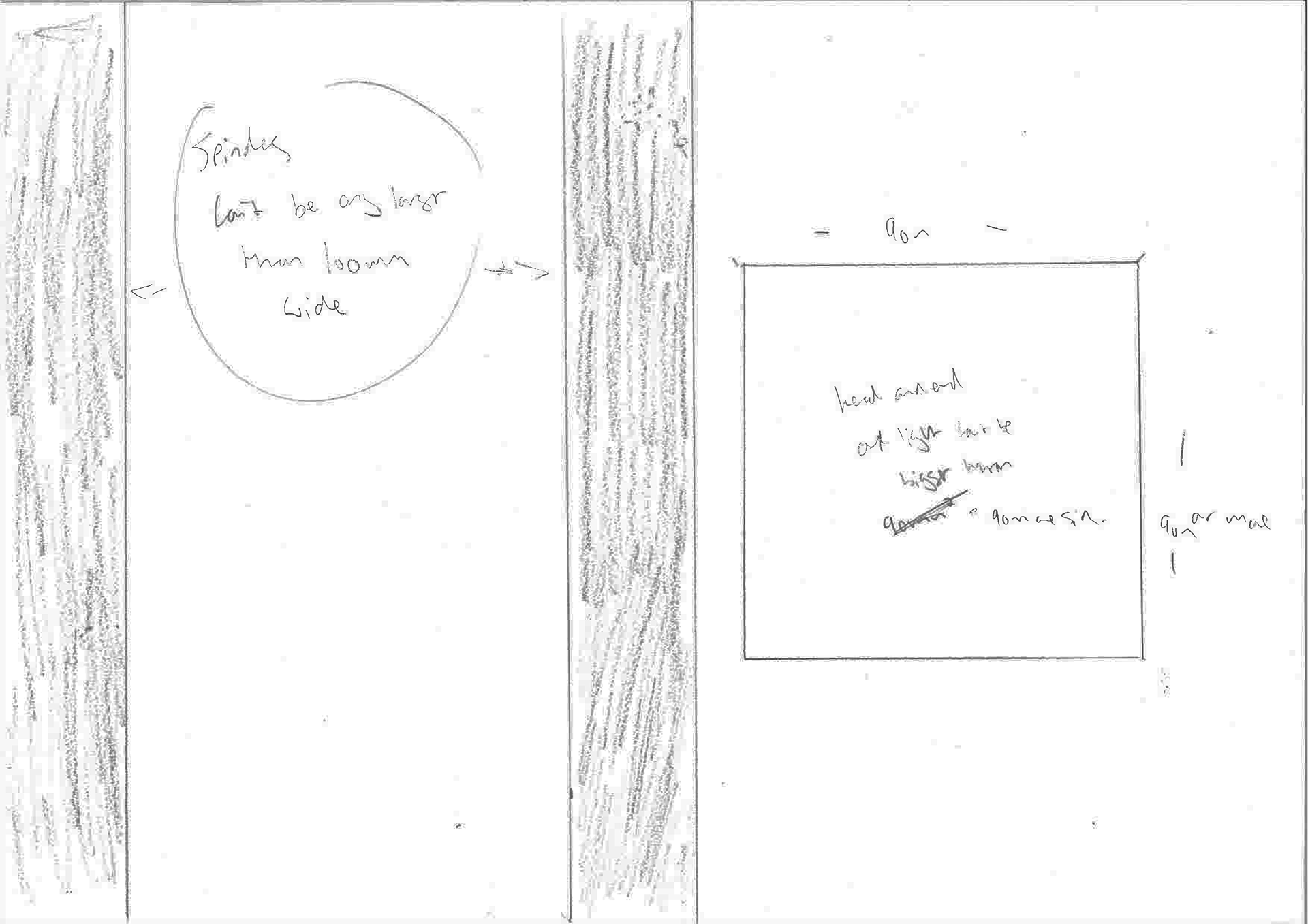

Since there are two newel caps on a staircase (top and bottom), then I need to figure out a way in which the snake-like light will be able to attach to both ends. Because of how concertina locomotion involves the animal body-gripping its muscles so that it can move in a straight line, I decided that I would make each end similar to how a clamp works. Because of how the spindles in a staircase have different sized widths and gaps between them, the light can't be too thick.
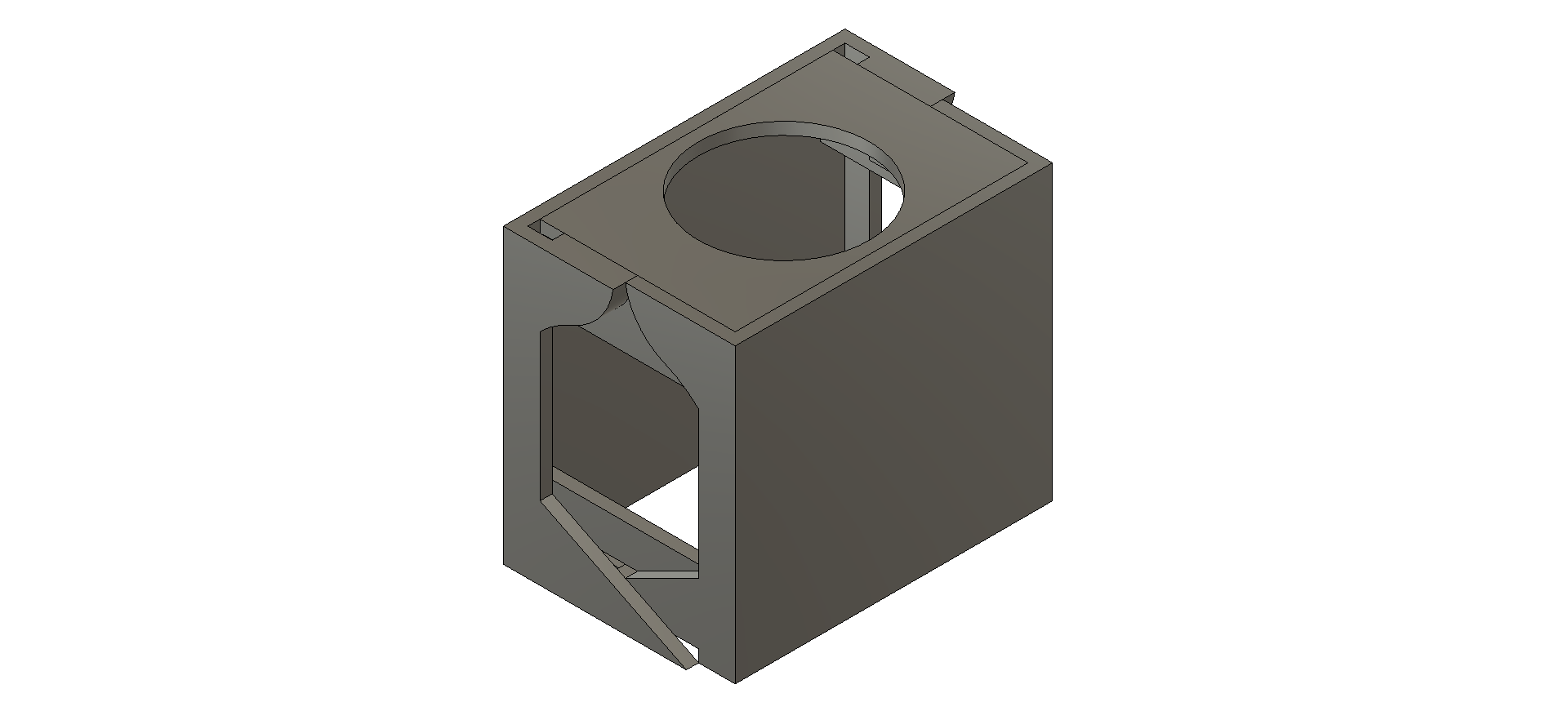
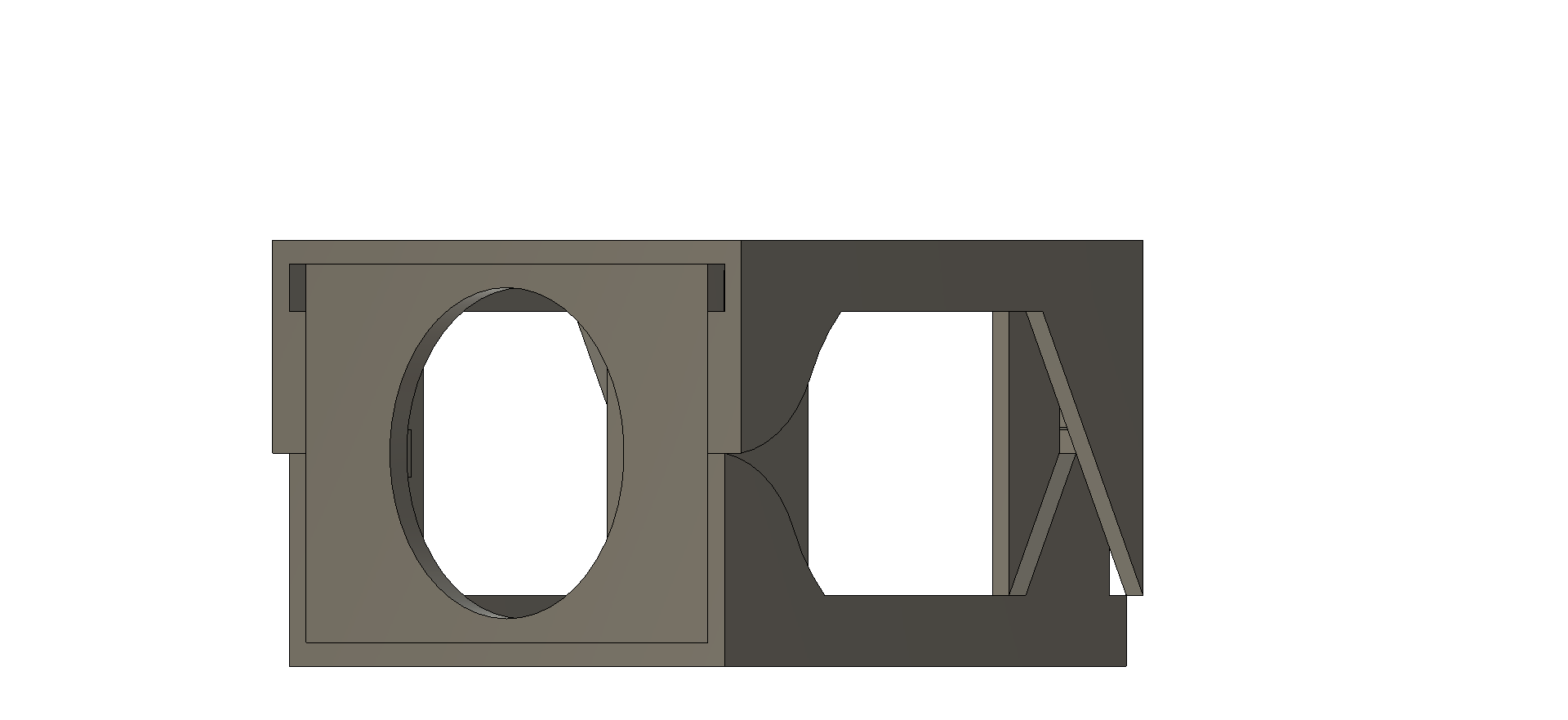


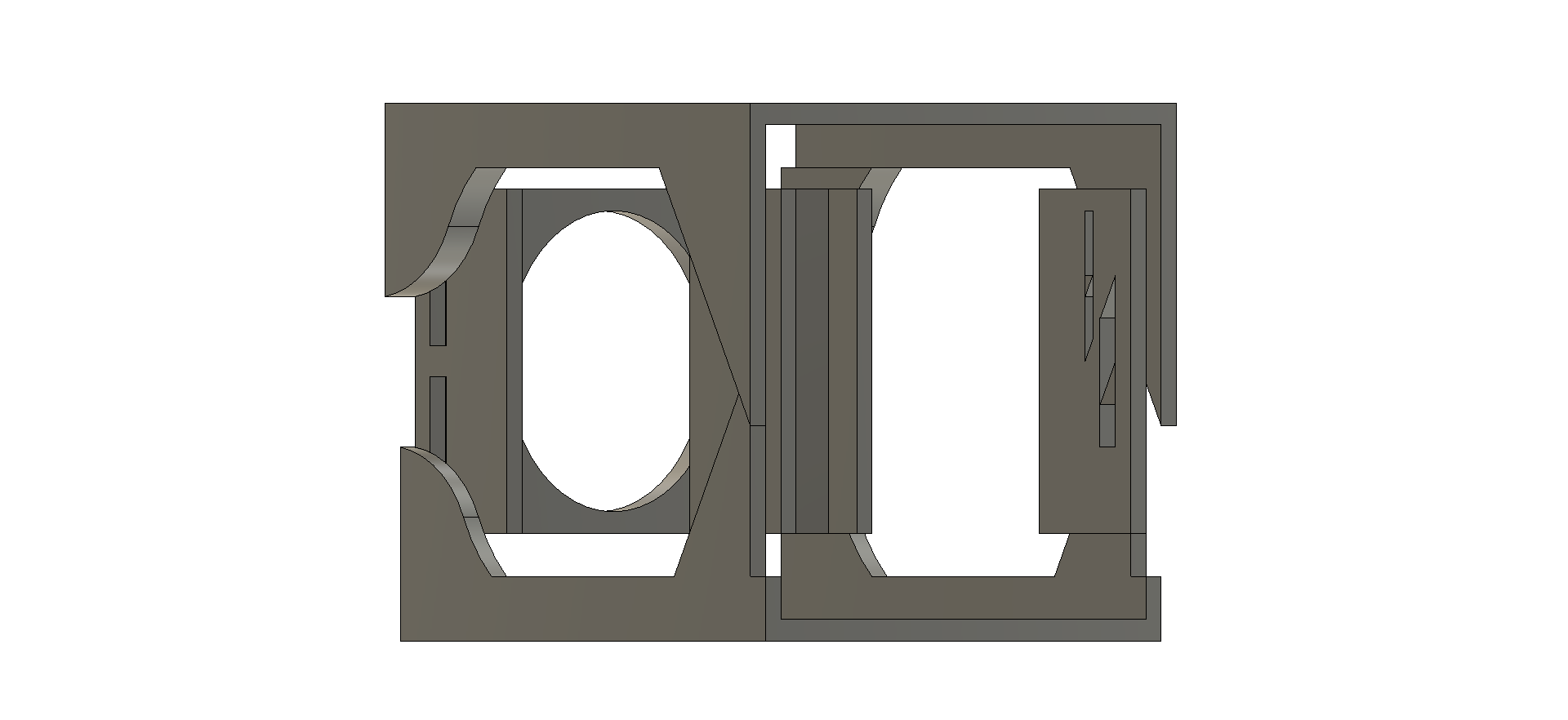

The above cad images (not renders) and video represent the first concept of how the light would attach to each newel. The idea was that this box light shape could change its size depending on the newel so that it can get a tight grip. I scrapped this soon after. I realised that I was going the completely wrong way with this and it seemed too complex.
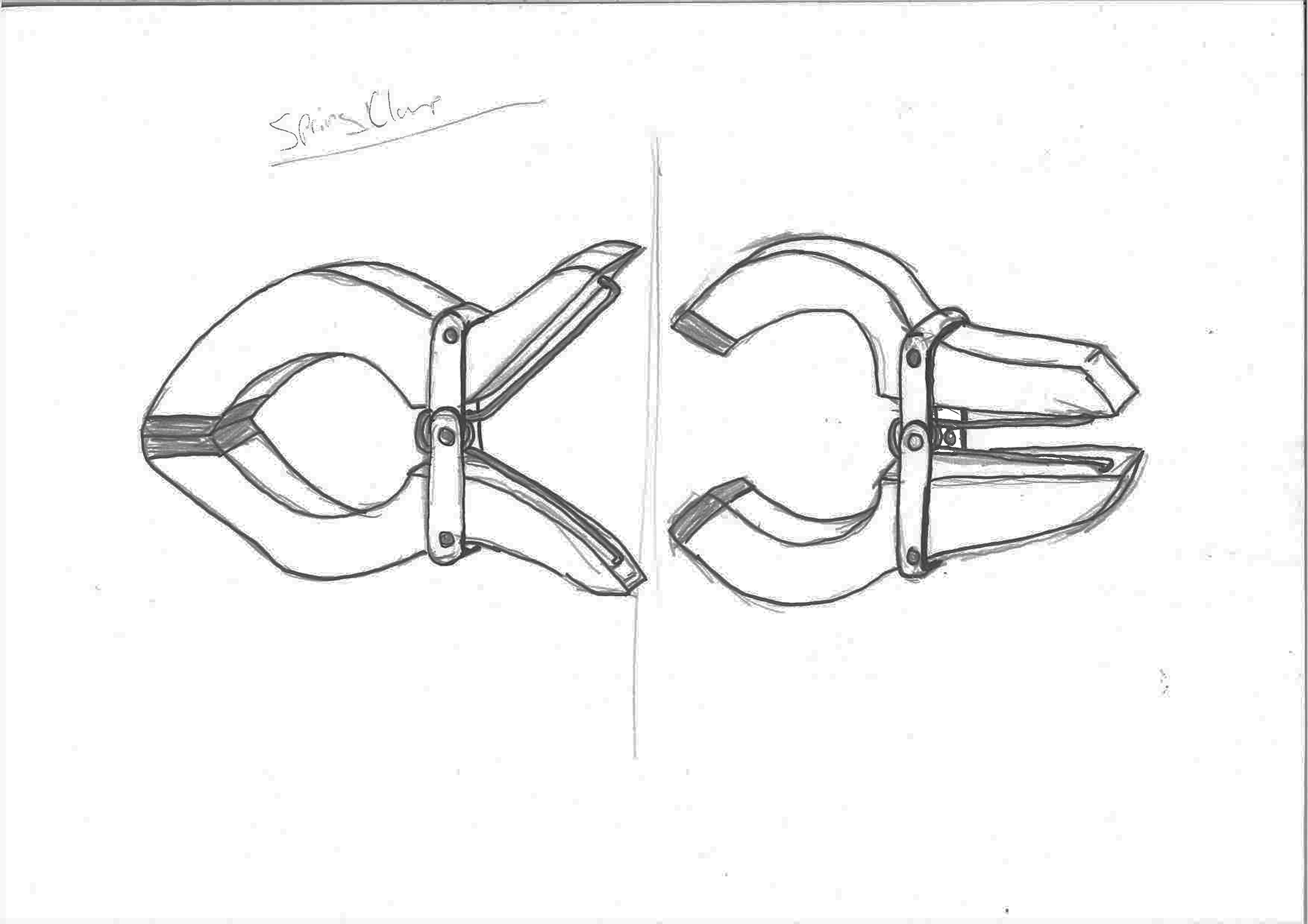
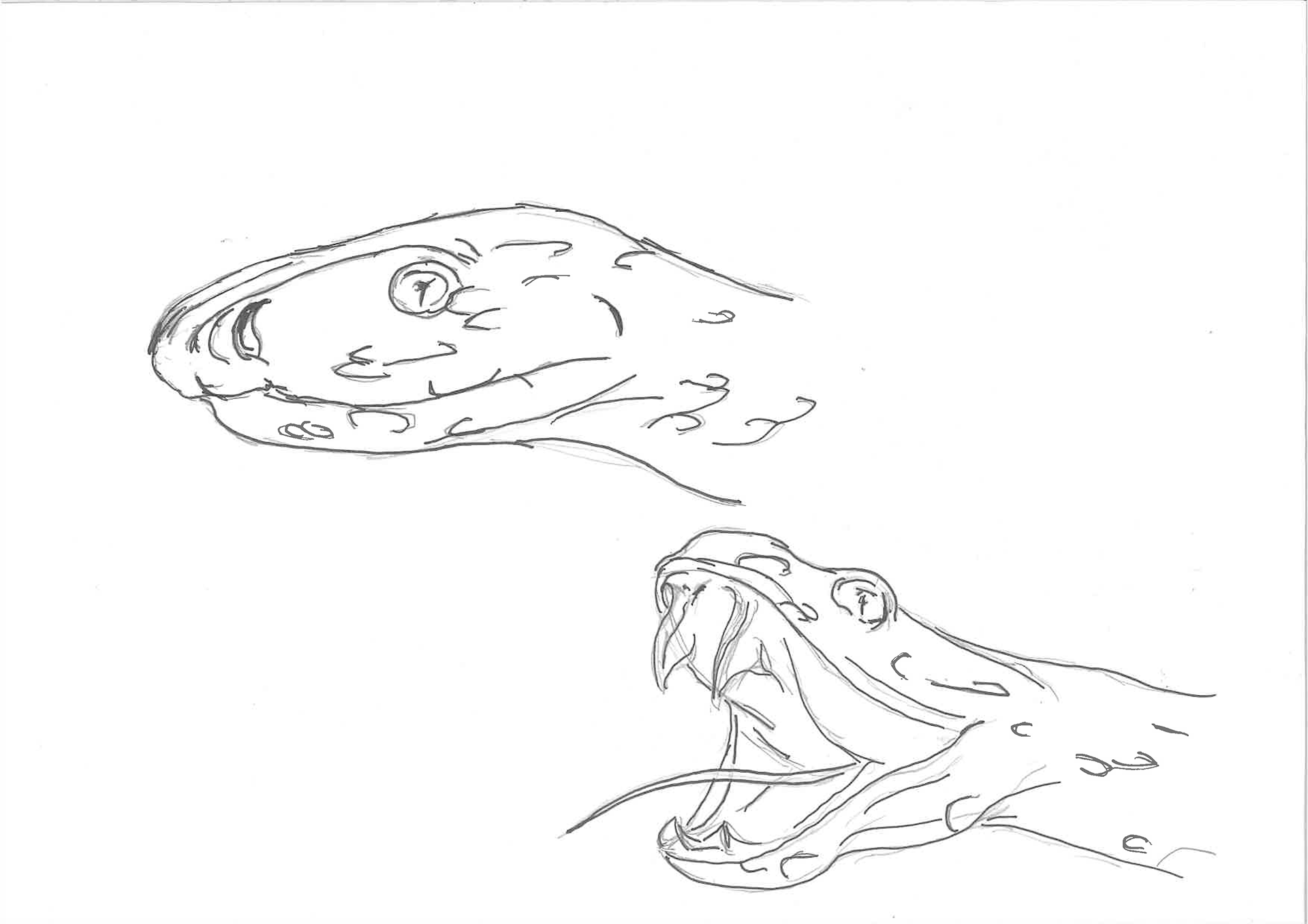

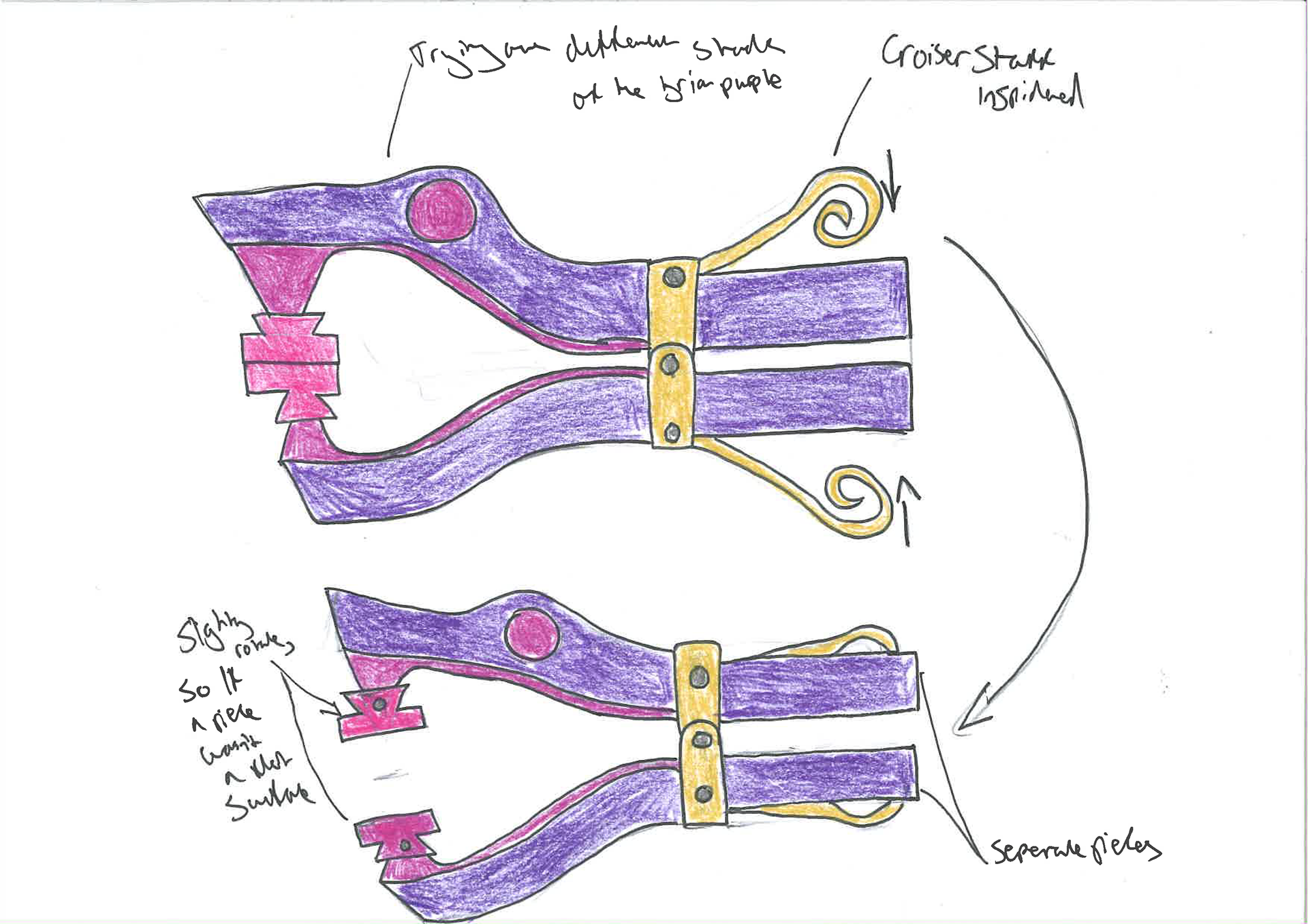
As you can see above I started using inspiration from the shape of a snakehead. What I realised was that I could make the light look like it is double-headed (amphisbaena). Hence why not have a switch on each end. I'll work out the wiring later. For now, I'm paying attention to the clamp aspect. The colour choice above is not a made decision yet, I'm just considering how parts could look. That being said the spiral bits sticking out represent bishop staffs (crosiers). As it happens these staffs are made out of wood or light metal but decorated with gold and silver. Although Tyrian purple is part of the refined section and therefore needs to be the main colour, I need to consider either silver or gold as well. Below are just more cad images of the design as well as more videos. The first model will be made out of 3d printed parts.

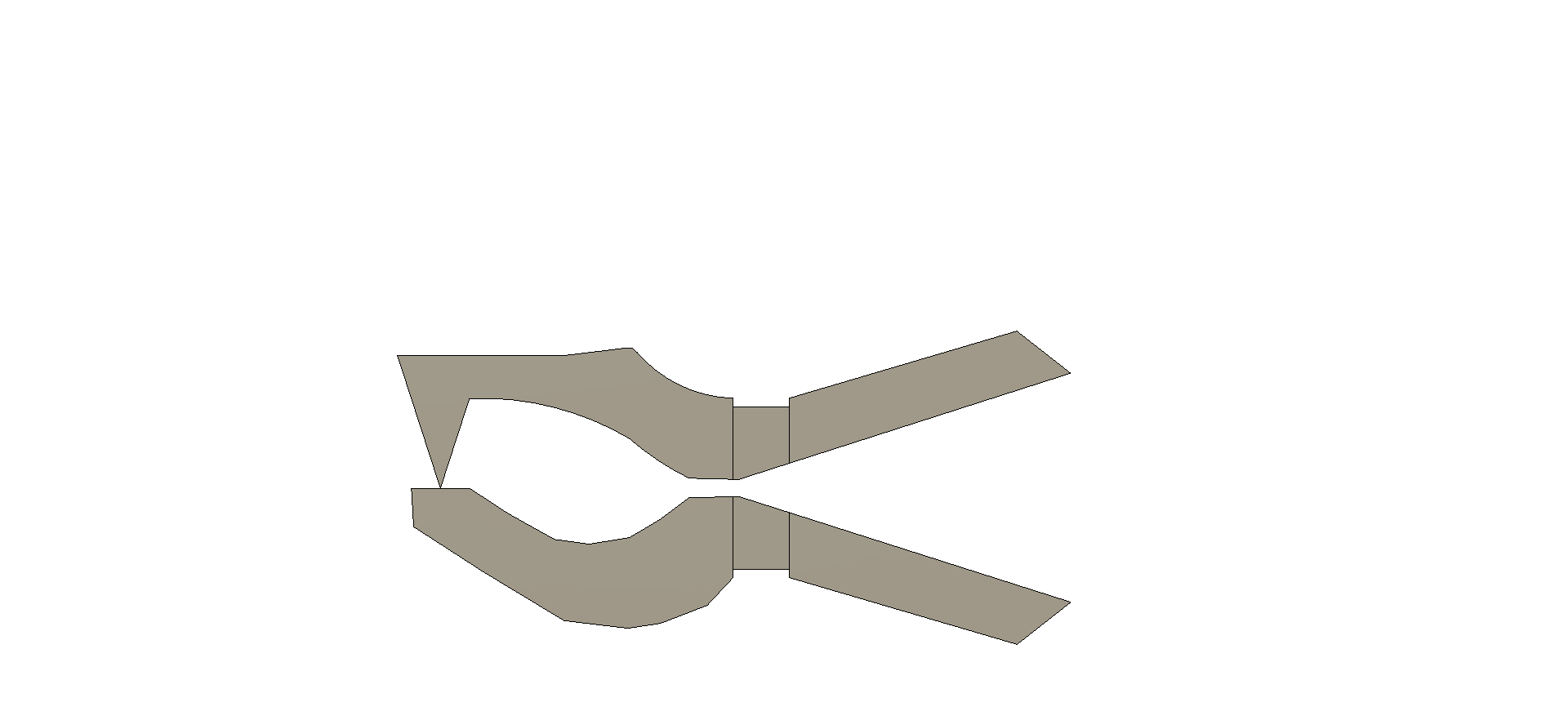


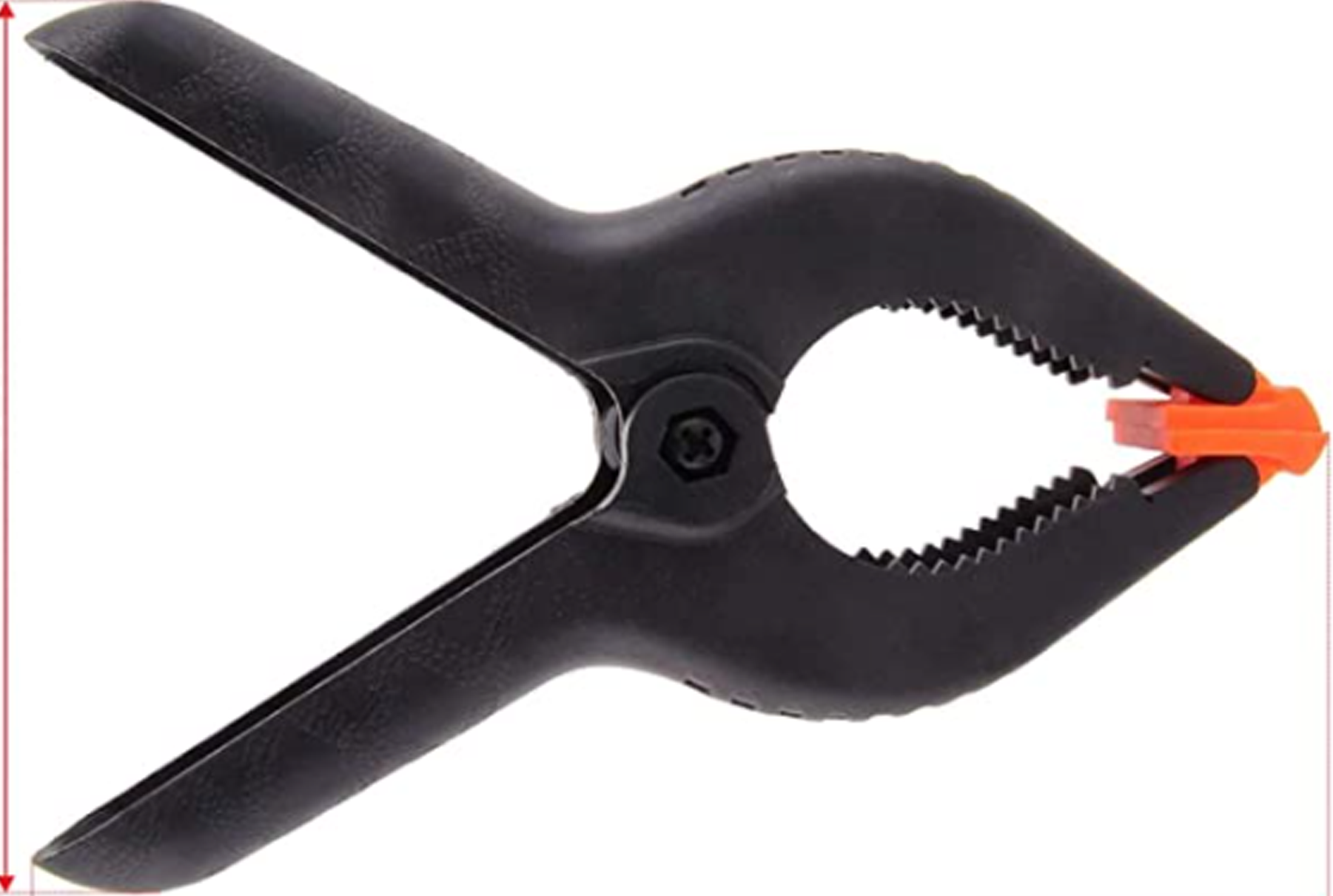
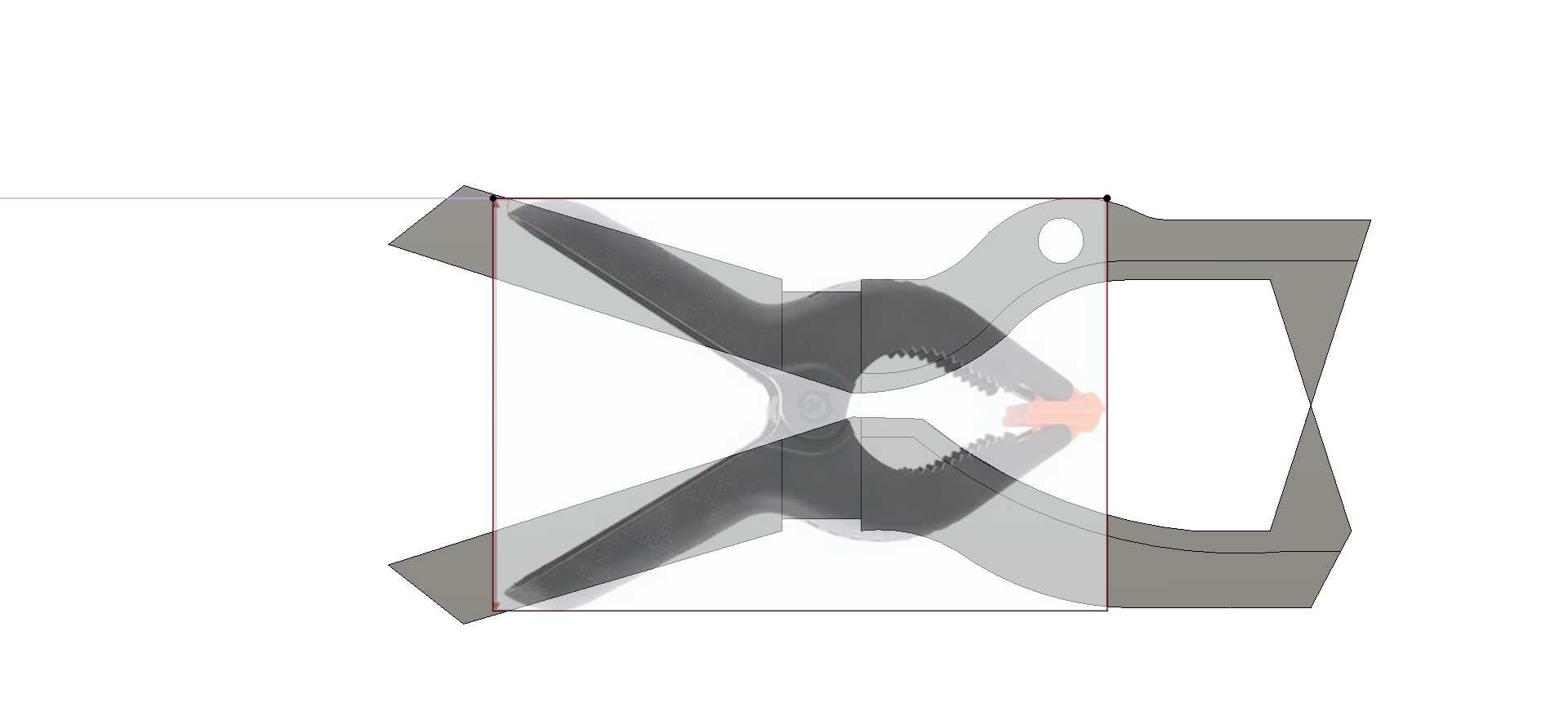
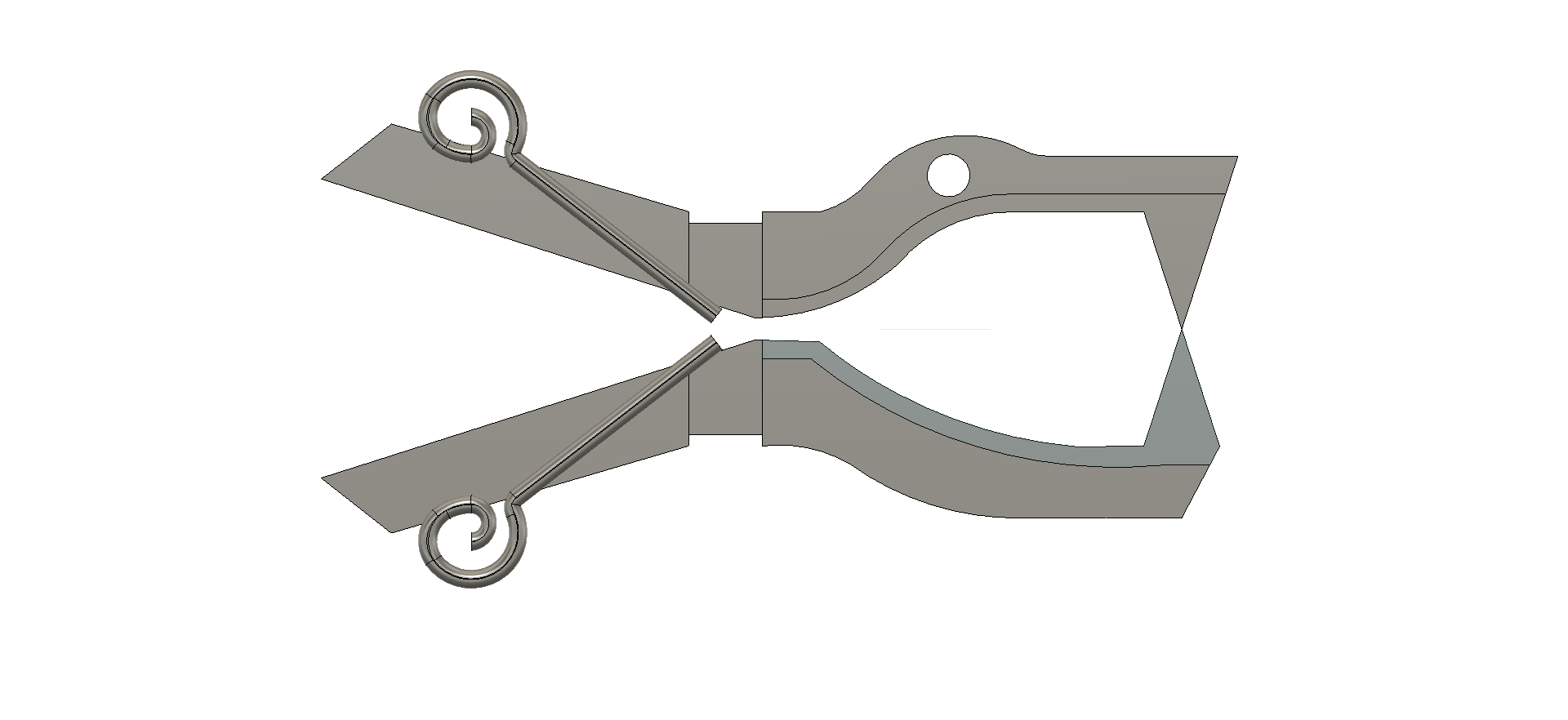
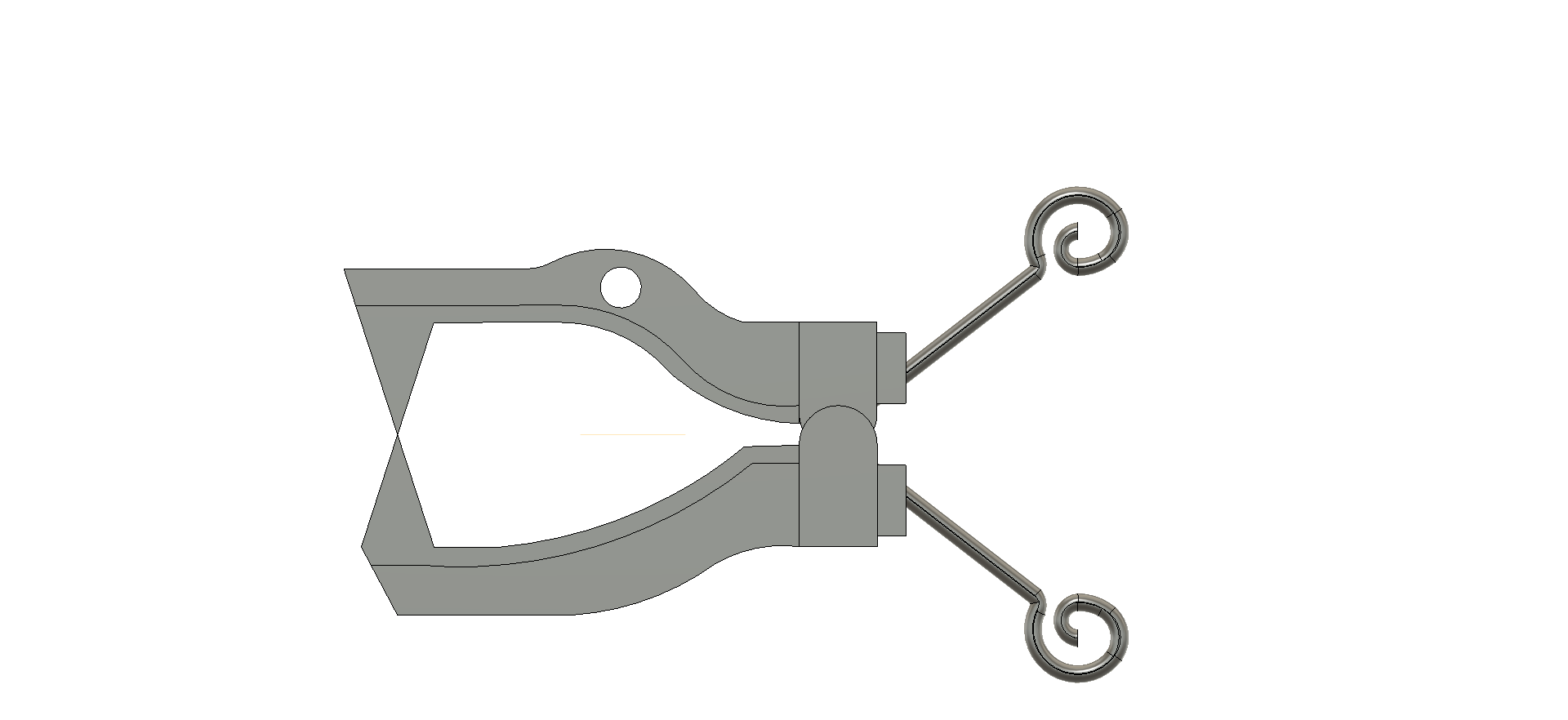
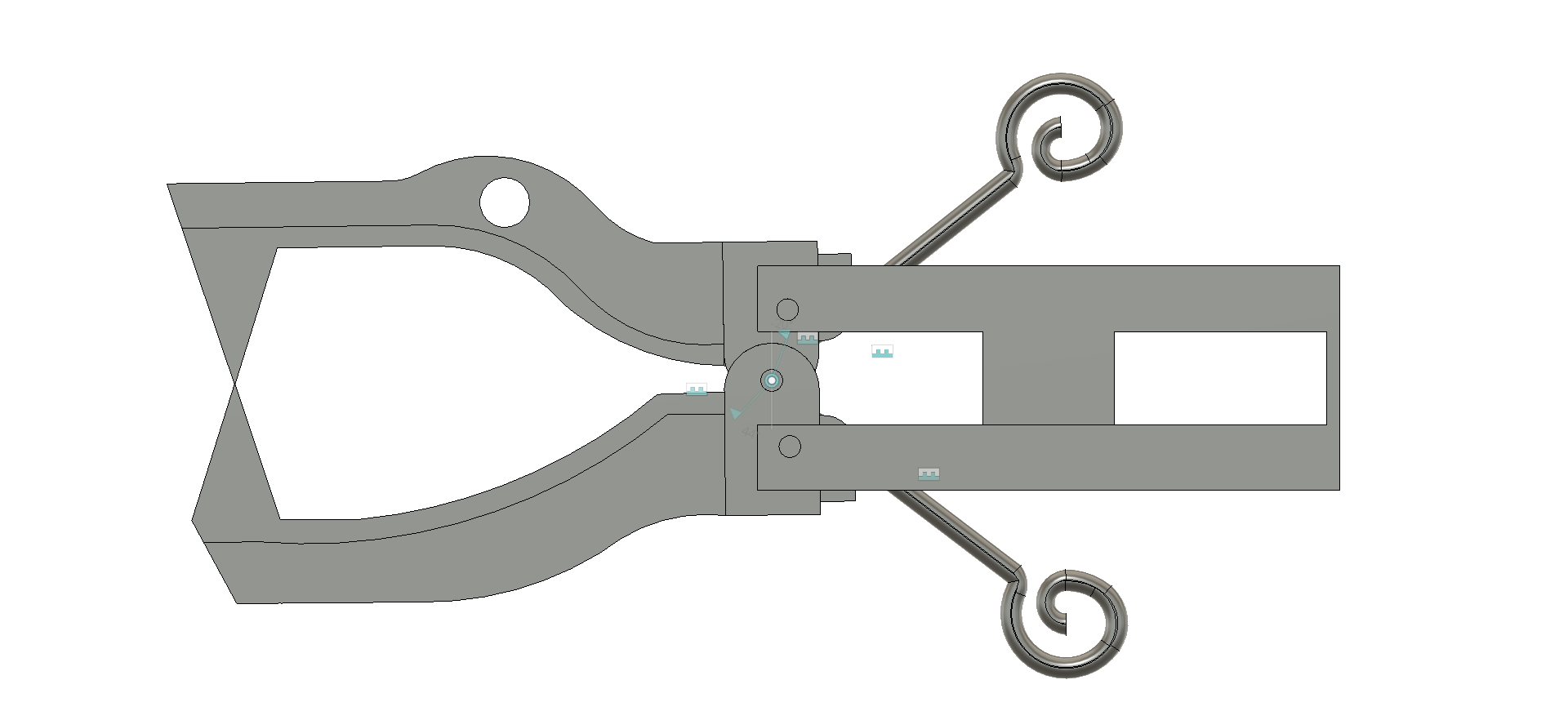

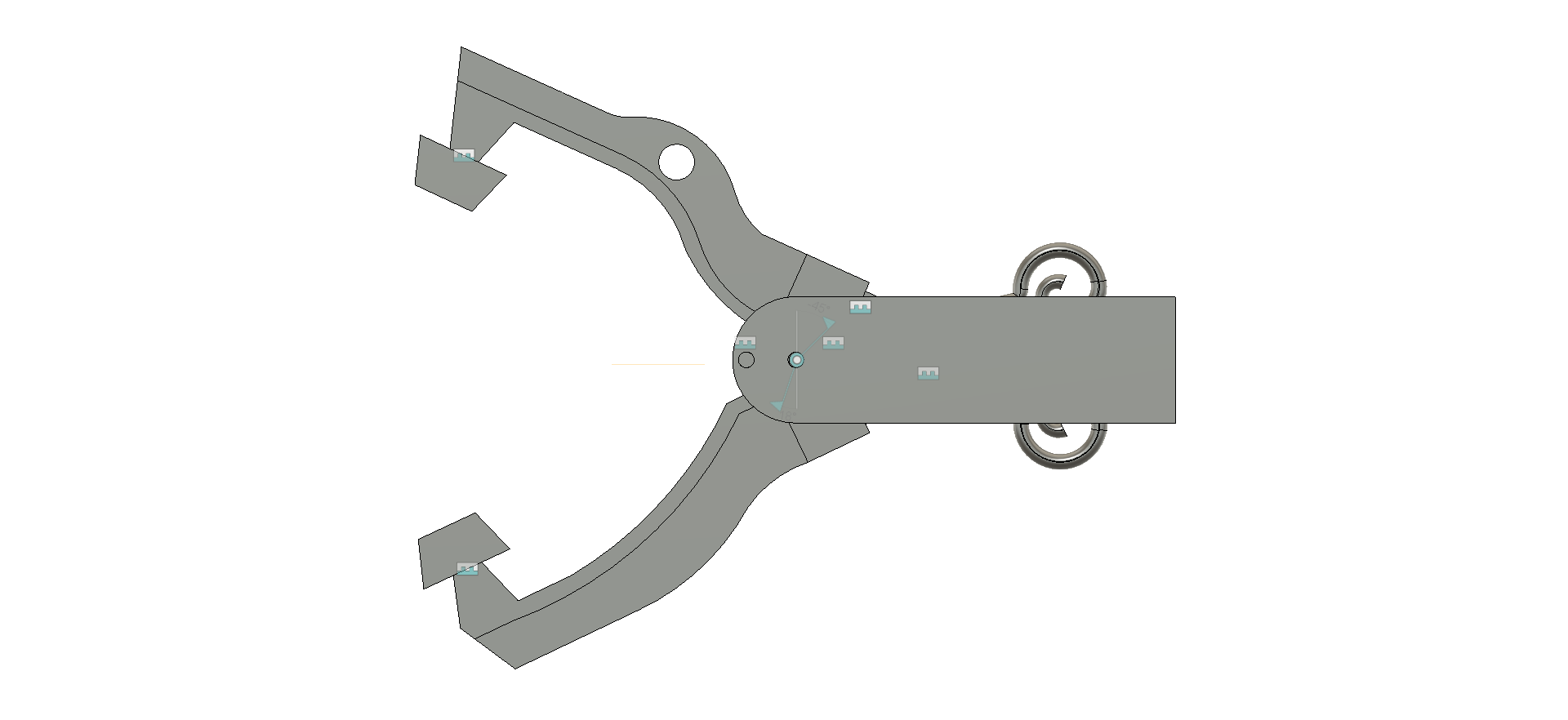
While the first model was printing, I moved on to other aspects of the light that need to be developed. The above sketch is the start of figuring out the length. A crosier is around 6 feet tall long and comes in 4 parts. Because the light has two heads, why not add another equal part in size. This will make the light over 7 feet long. However, I haven't taken into account the part that will light up or how many parts. I could make the snake-like body light up entirely yet this seems to be a waste since other words within the section need to be considered. It can't be all about snakes. Having the parts that light up in between the 5 pieces (the double-headed, crosier, body) means that I can use another word from the section for this purpose along. Below is another quick sketch that represents where my head was in terms of the form of the light. The lighting parts will be inspired by the whorl shape. This isn't a completely random choice or one just for the sake of it.
The image on the bottom left is one of the symbols used to symbolise the creature called amphisbaena. As you can see it's not like a snake body since there are different accounts on how it looks if it was real. In a way, it is similar to how a whorl shape looks. The mythical origin of the creature is that it grew from or came alive from the blood of Medusa. How the myth of the animal comes from another myth made me think back to the initial research in which I discuss how the colour Tyrian purple is referred to in the same book as the amphisbaena. What I decided was that the whorl shape would fit within the body of the snake/crosier like form because the shade of purple comes from the Bolinus brandaris, a sea shell with the whorl shape meaning that the whorl shape has a significant presence within the word section.
If I'm being I don't have a clue on what material will be used to make this whorl shape. But I do know that it will need a surface on it that allows it to grip other surfaces. Therefore I'm considering having a rubber light material attached to it.
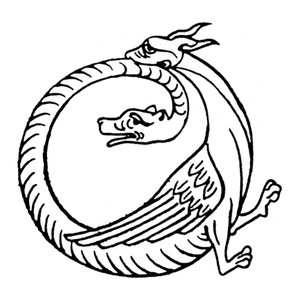
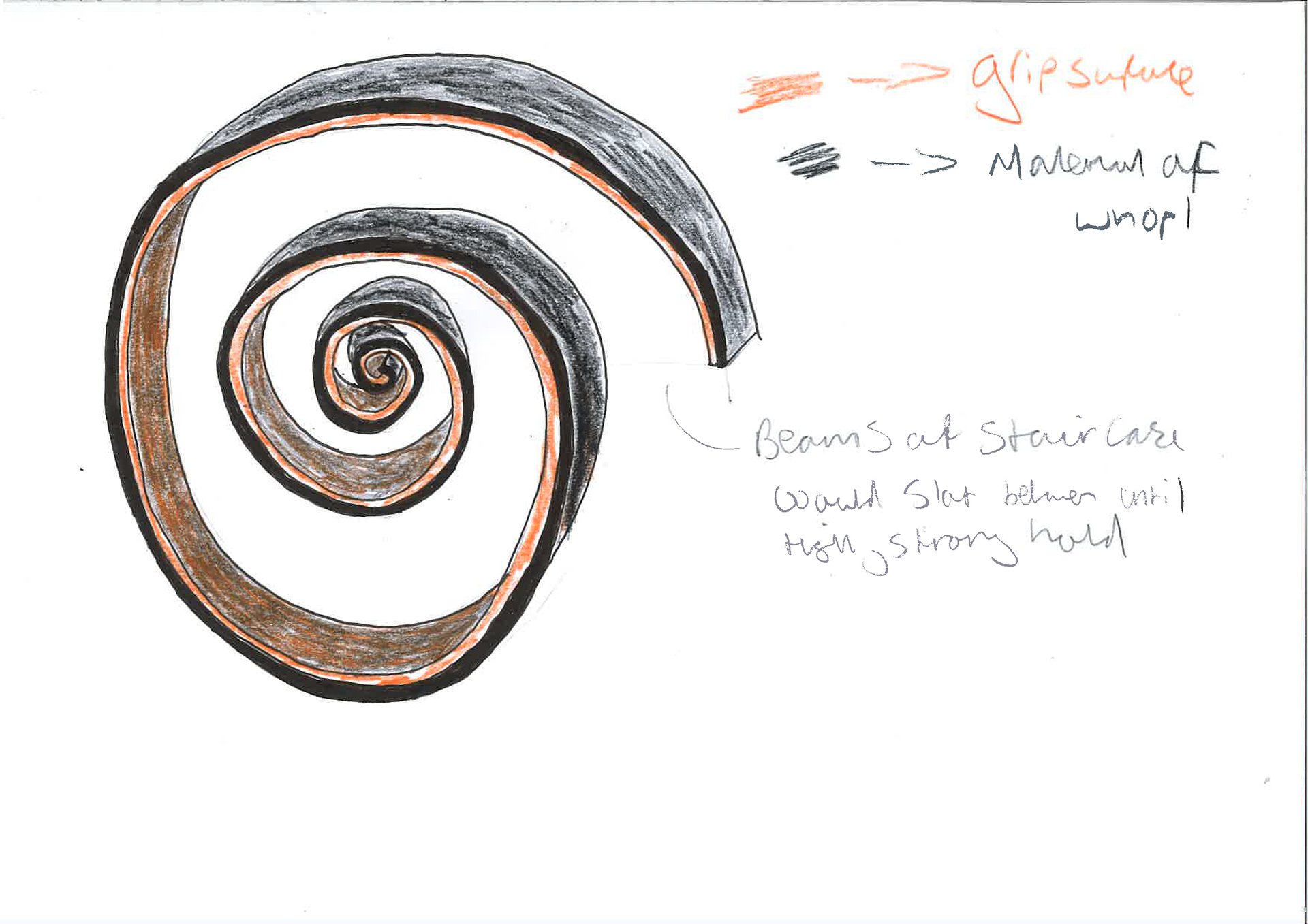
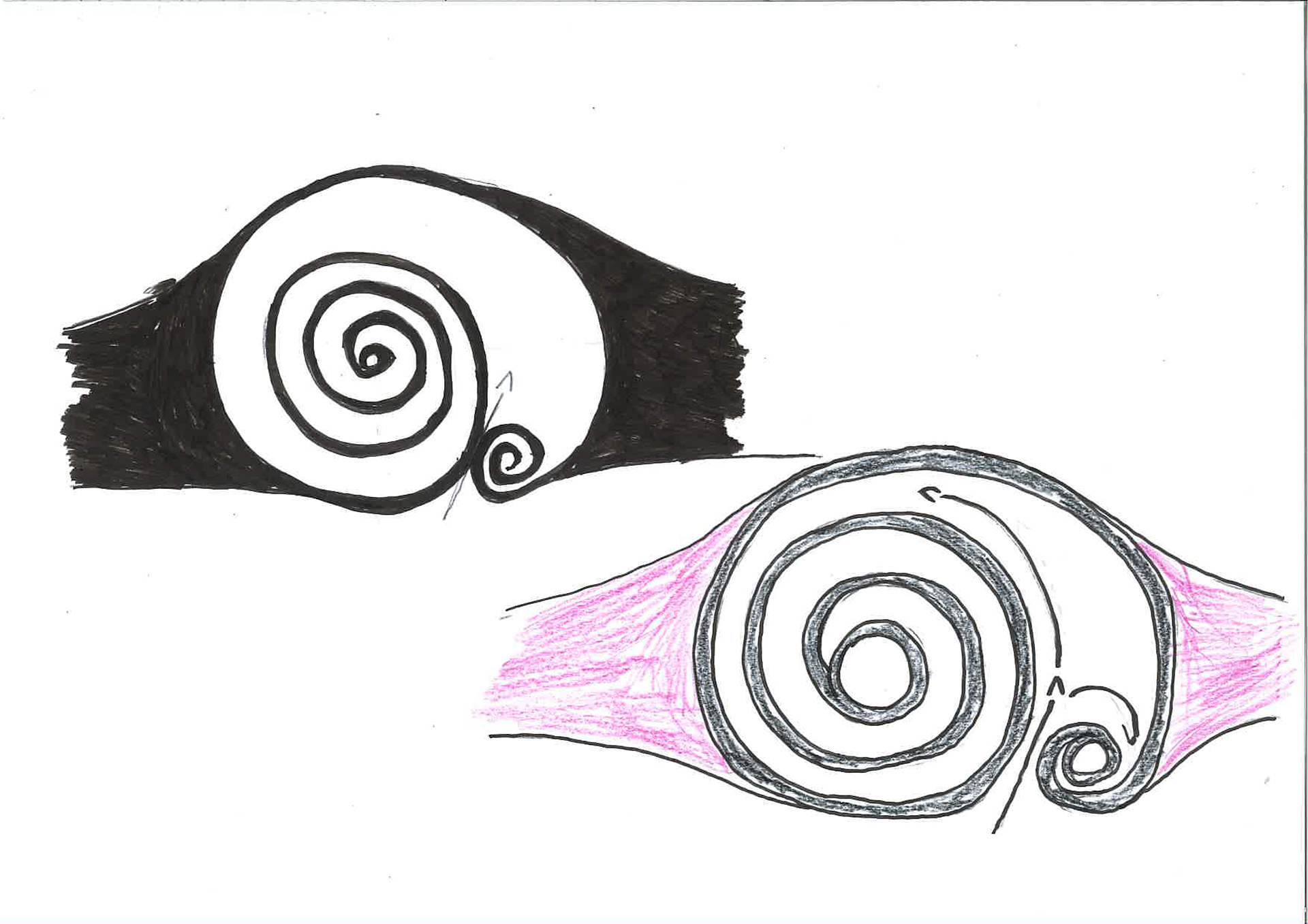

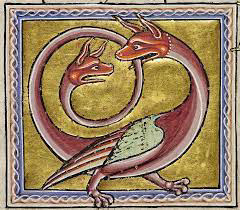
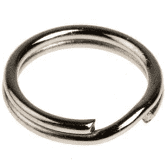
I came to the sudden realisation that the symbol of the double-headed snake is similar to a keyring. The spiral tube of the ring that acts as a coil has the ability in some way to hold items in between each layer of the ring. Therefore the whorl shape will take inspiration from this by being made out of aluminium or stainless steel.
Once again this is another rapid sketch. Its sole purpose was just to understand what I'm working with. Although, I've added across (or two) to the whorl because I felt I was neglecting the term crosier. Also, this is not the final colour scheme.
While I type this paragraph up, I'm still waiting for the 3d prints to be done. The 3d printer started acting up, requiring a few repairs and replacements. Anyway, the actual light won't be a whorl shape. As in not a strip of led wrapped around it. Instead, I want it to be lighted by led bulbs. The reason being led bulbs are more efficient than incandescent bulbs. But the reason for using bulbs is that the light is going to be big hence I reckon it would be a waste to use a large amount of led strips. Also, they are more expensive to buy and replace if damaged.
Still waiting for the printed parts. To figure out the number of bulbs also meant that this would impact the shape of the whorl. If it is too small then there could be difficulty in place and changing the bulbs. Well, the question is what type of led bulb?
In one of the sketches shown earlier, I mentioned how I added a cross-part due to the word crosier. A crosier is an important religious object, hence I started looking at the lighting of churches. Which made me aware of how candles are significantly used in places of worship. Therefore I selected candle-shaped bulbs for this design.
There are 4 whorls between the 5 pieces. The 5 pieces represent a mix between the crosier staff and a snake body. A body like a snake has a spine. As in it's a vertebrate. A vertebrate is an animal with a backbone. There are 5 classes of this type of animal. Therefore there will be 5 bulbs per whorl. This may seem too much but the light is large hence the light emitted needs to match the form it comes from.
Another factor is the spindles on any given staircase. They can come in many sizes yet the height is usually around 900mm. An average spindle from a warehouse store such as Wickes or B&Q has a width of 32mm. The width of the spiral on the whorl will be the same. The thickness of the whorl will be the same as a key ring thickness which is between 1.6 to 3.2mm. Note, this may change due to construction or making reasons.
In one of the sketches shown earlier, I mentioned how I added a cross-part due to the word crosier. A crosier is an important religious object, hence I started looking at the lighting of churches. Which made me aware of how candles are significantly used in places of worship. Therefore I selected candle-shaped bulbs for this design.
There are 4 whorls between the 5 pieces. The 5 pieces represent a mix between the crosier staff and a snake body. A body like a snake has a spine. As in it's a vertebrate. A vertebrate is an animal with a backbone. There are 5 classes of this type of animal. Therefore there will be 5 bulbs per whorl. This may seem too much but the light is large hence the light emitted needs to match the form it comes from.
Another factor is the spindles on any given staircase. They can come in many sizes yet the height is usually around 900mm. An average spindle from a warehouse store such as Wickes or B&Q has a width of 32mm. The width of the spiral on the whorl will be the same. The thickness of the whorl will be the same as a key ring thickness which is between 1.6 to 3.2mm. Note, this may change due to construction or making reasons.
This image demonstrates how the whorl would be positioned. The only problem is that due to the different sizes of the spindles and width between them, it may not be able to do as on every staircase. hence I will most likely add another feature that enables quick clamping onto the whorls.
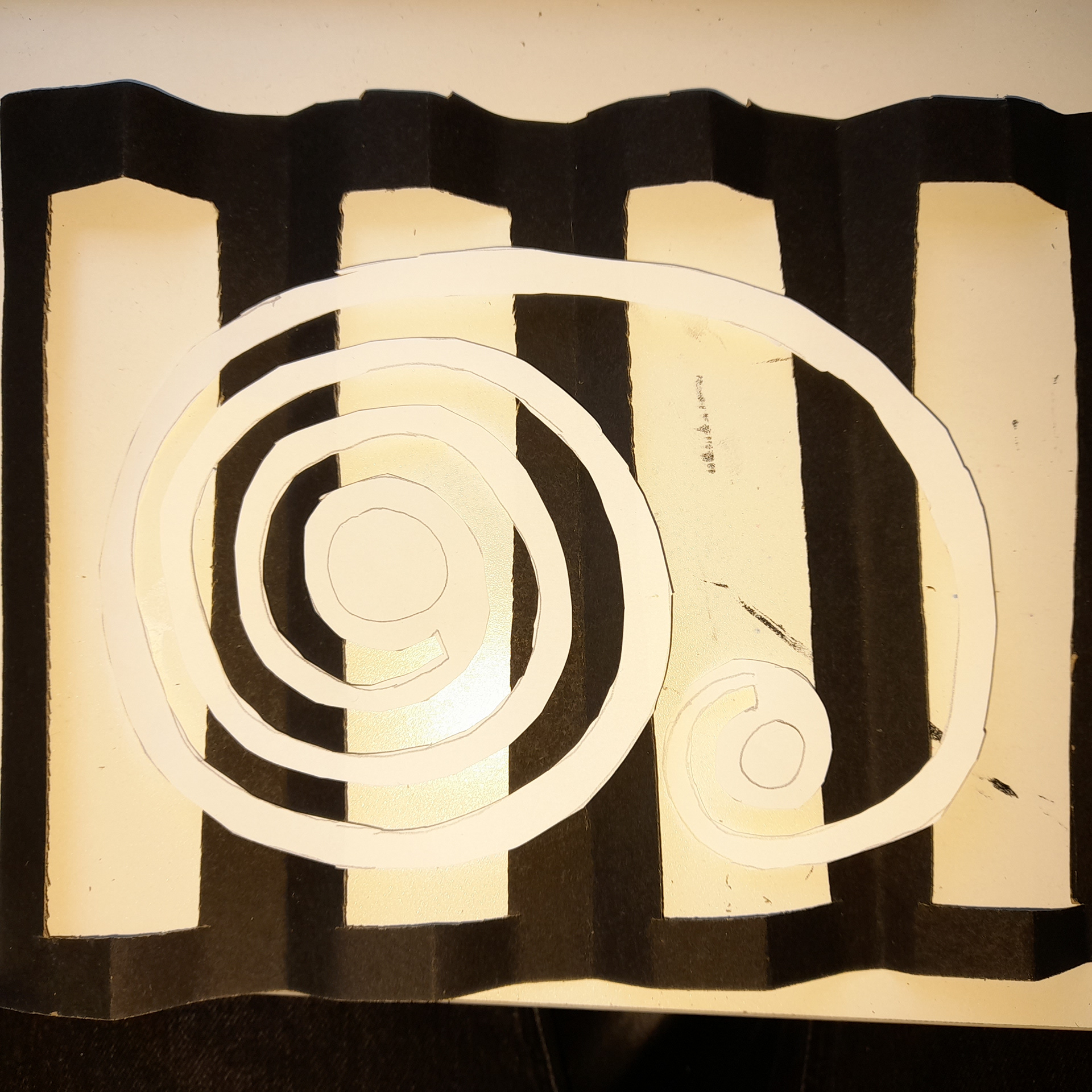
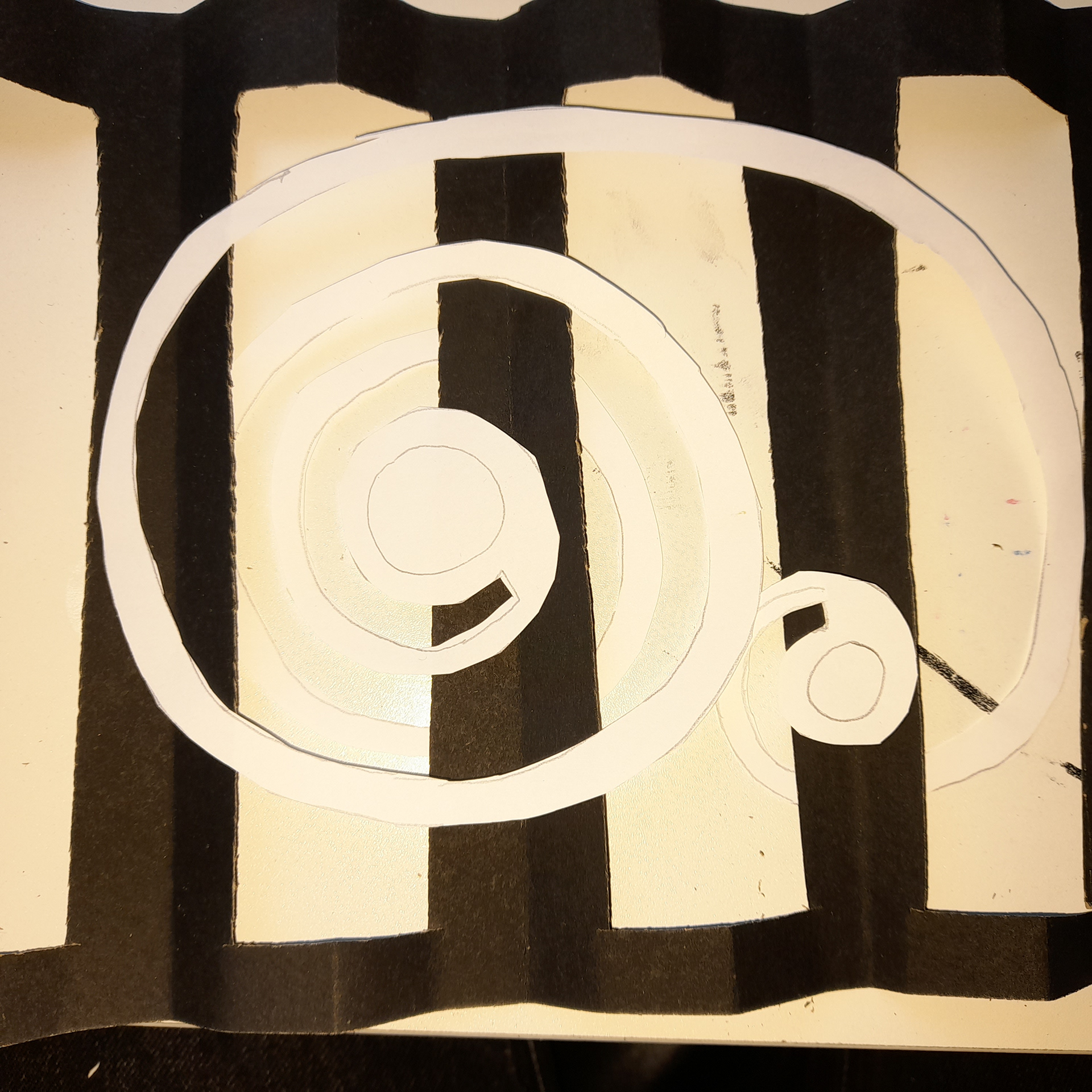
The above cad image is the initial whorl shape for the light. the light grey represents aluminium and the darker grey represents the area in which the bulb sockets will be located. More of this will be shown later. Below is a guide to how the wiring will be positioned.


At this moment, the aluminium whorls will need to be laser cut into smaller pieces. How this may affect the strength or even the ability of it to bend between the gaps without losing its original shape. Therefore a trial piece will be used to figure out what can or can't be done. If multiple pieces have to be joined together, then I will need in between pieces to hold it all together making it thicker than the keyring measurements described earlier on. Also, the wiring has to be protected and not visible. So my idea is to have the wiring/cable fitted through heat shrink which is sealed between the sheets of aluminium. The heat shrink will be white to represent the vertebrate and spine. As well if it were black then it would be more noticeable. The dark grey has been changed to a gold colour which will most likely be its final colour.

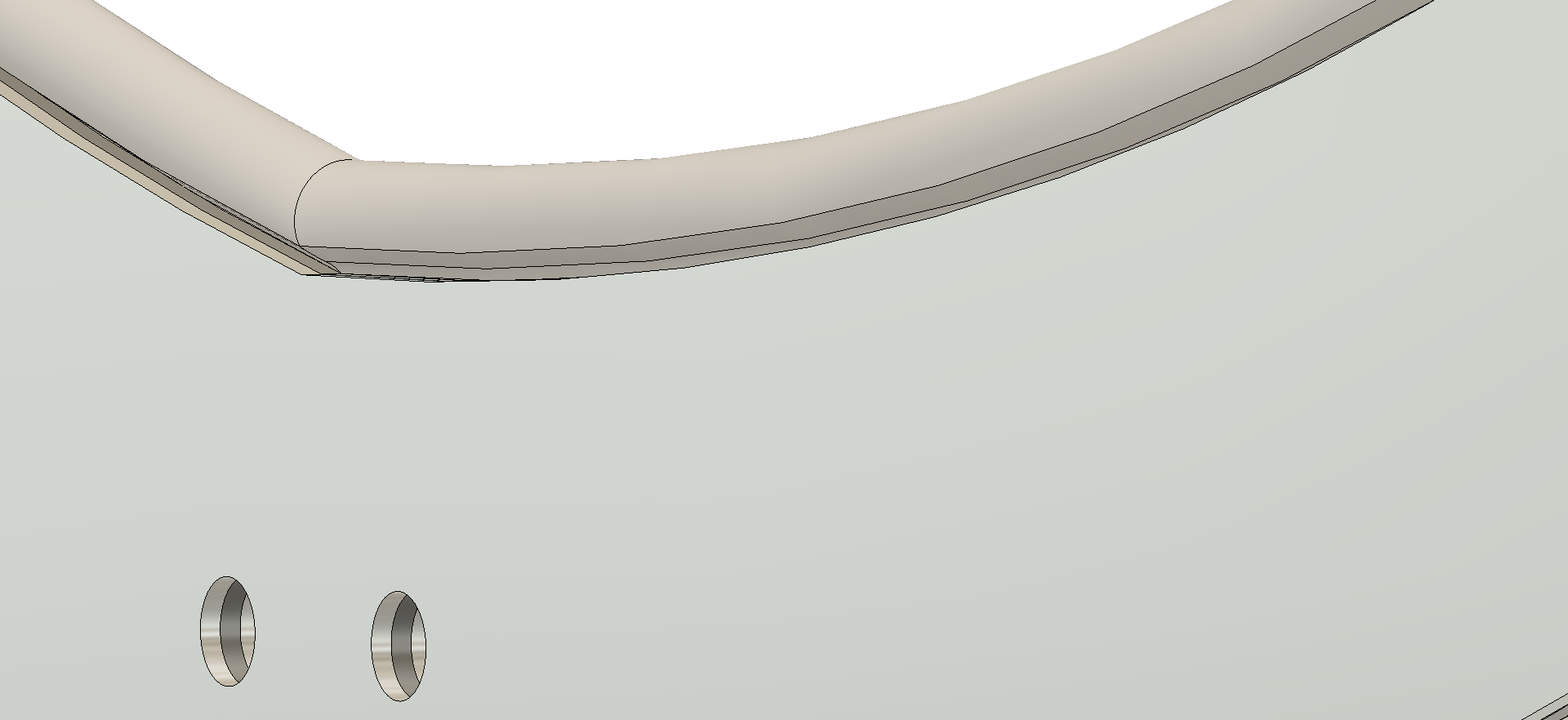
The below 3 images are to show how multiple pieces may be needed.
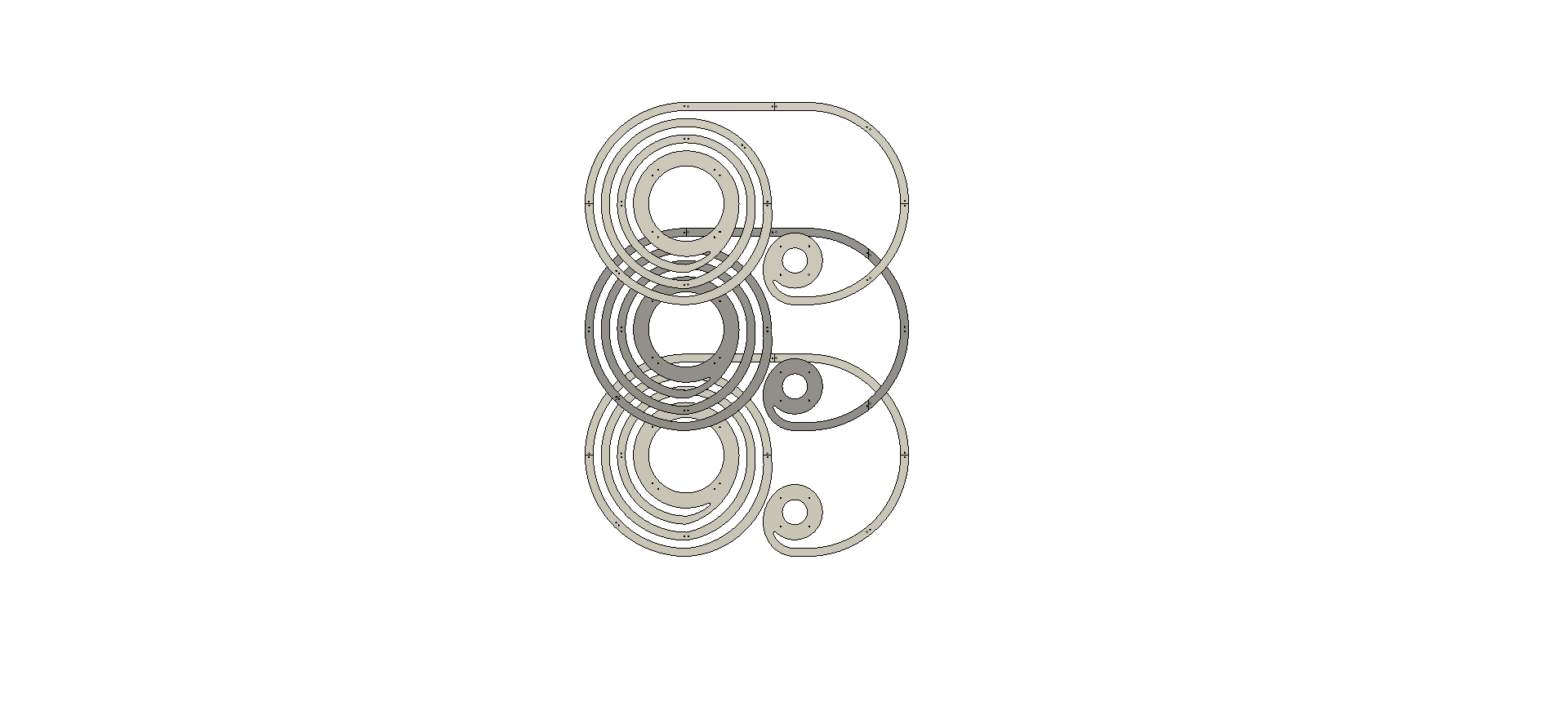
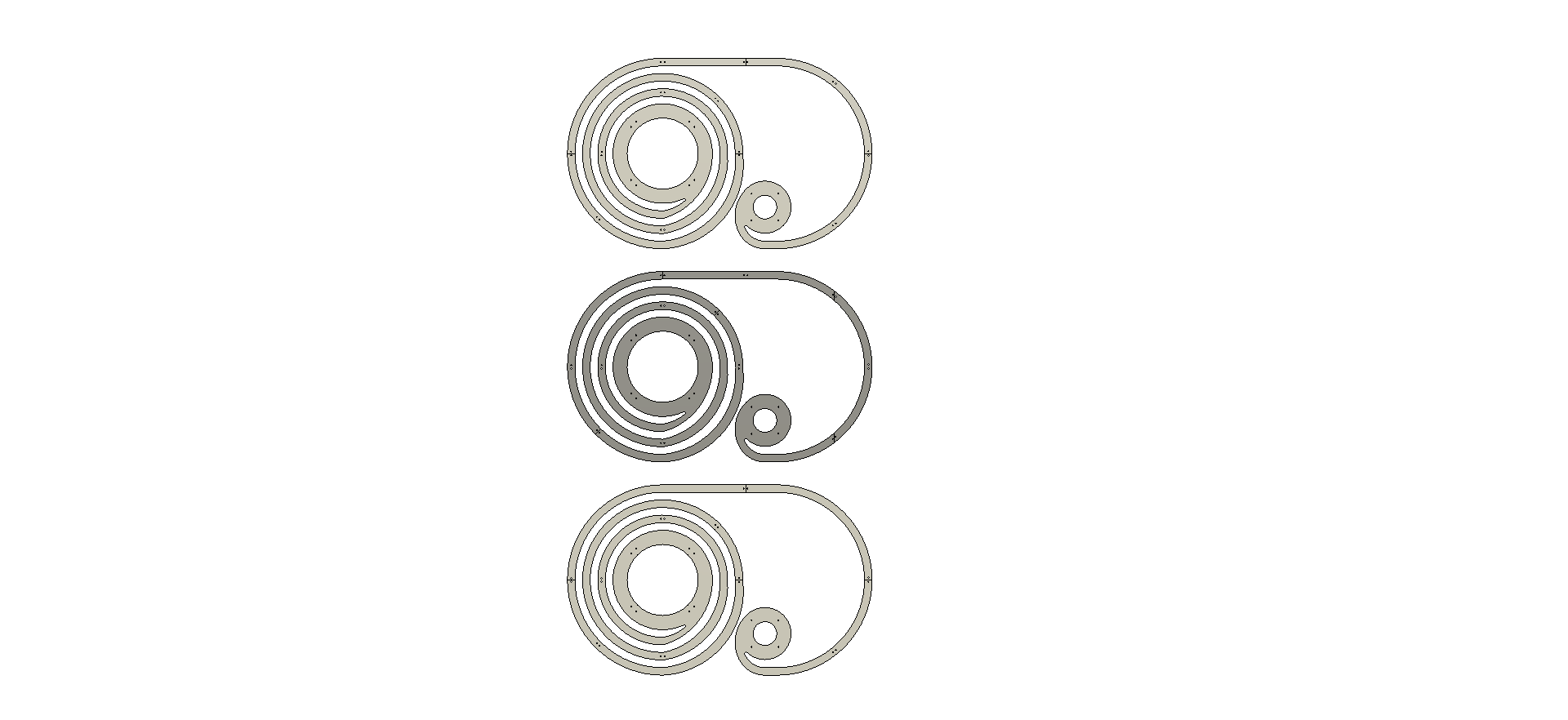
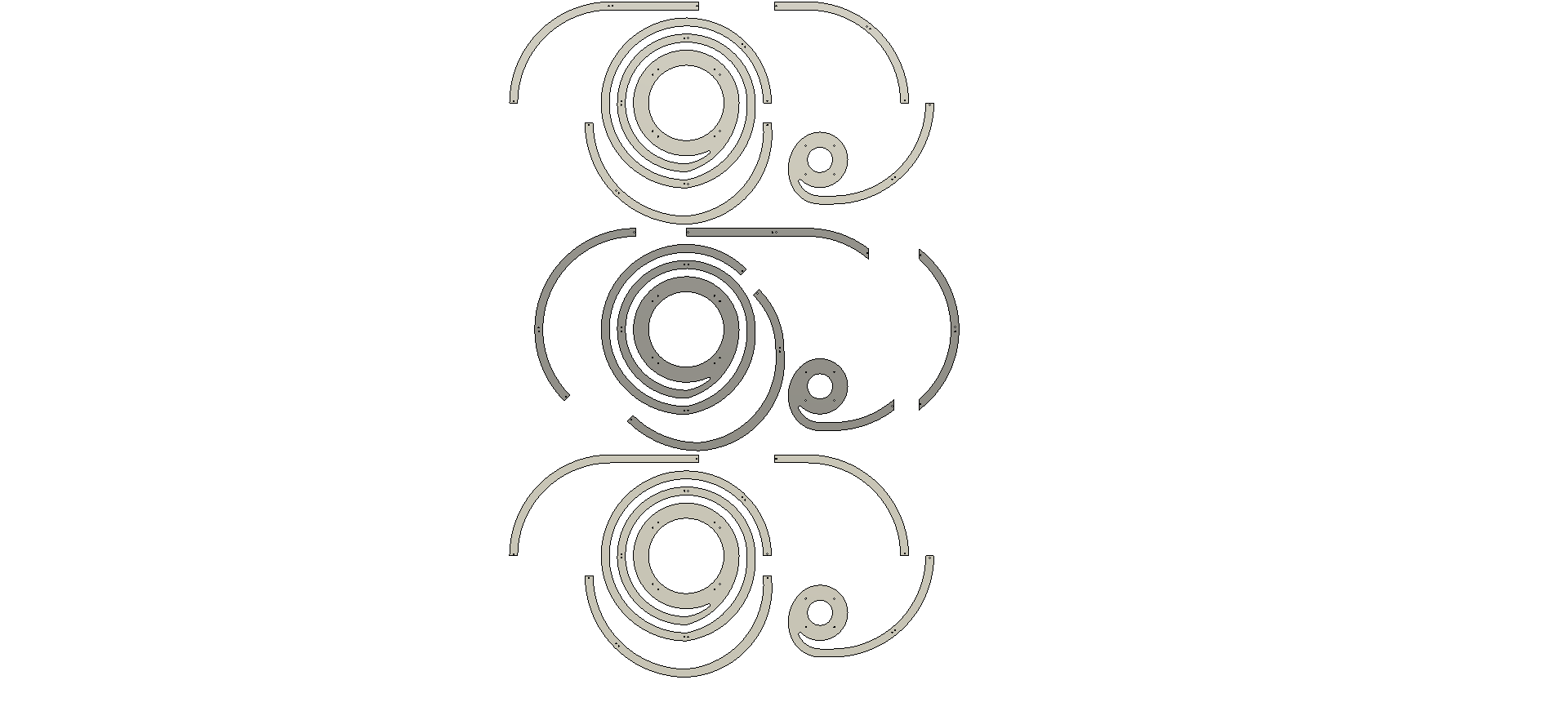
Earlier on I stated how I would need to include a quick clamp idea to the whorls as well. Below are two pages of sketches that show the direction of my line of thought is going with this. It's in earlier stages as of now but it will need to be done before I have parts laser cut.
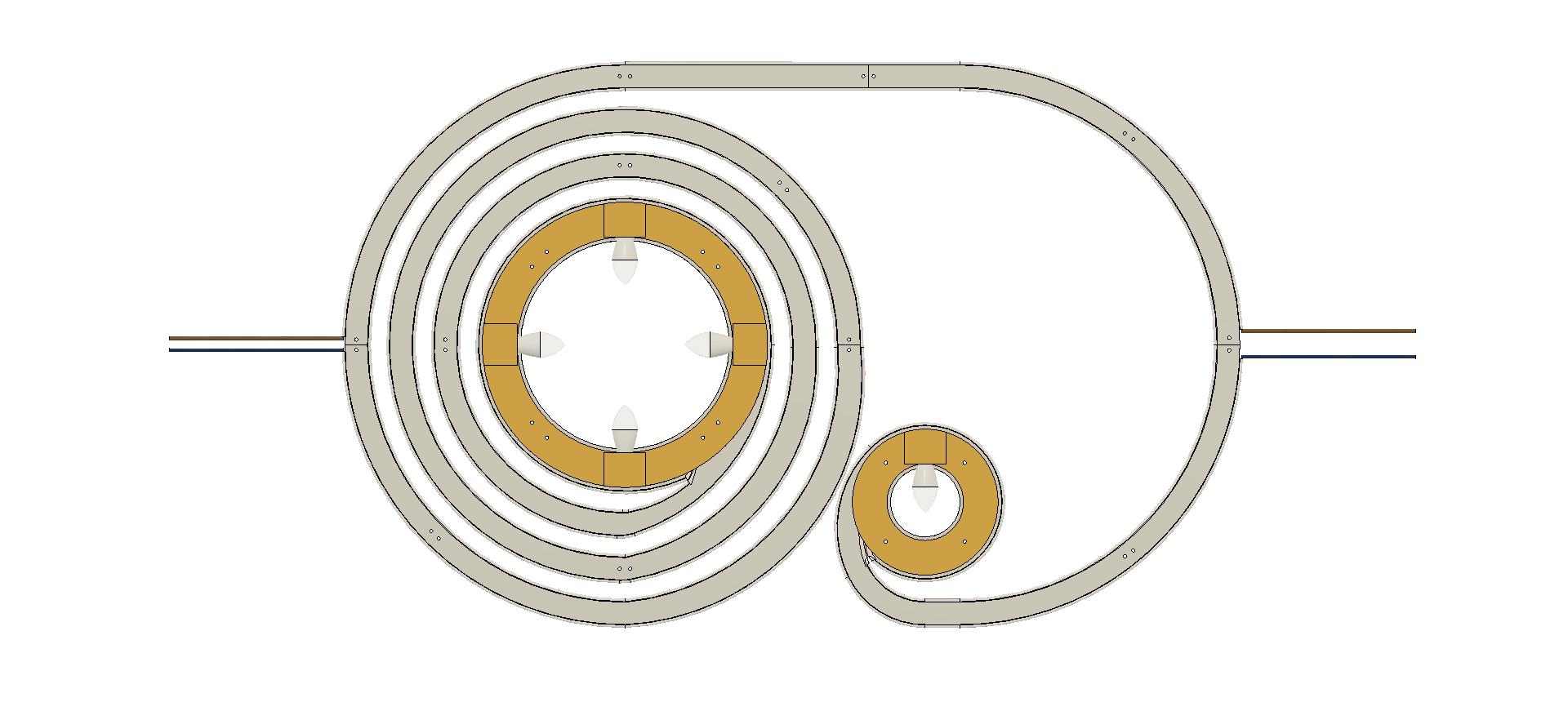
As you saw previously I added a cross-part to the whorl shape. I've continued with this decision and added the bulbs to represent this as so. There are 4 bulbs in the main sector and there is one in the smaller side section. The image below shows the back of the light, where the cable connecting to the bulbs will be placed.
To prevent glare as well as to include the term Tyrian purple I made the choice of adding a protective covering. For now, the way it would stay in position is that it will screw around the 3d printed part until it becomes tight.
Below is another cad image showing all the concepts (so far) placed together. There is an obvious size difference between the whorl lights and the grips at each end. The grips will need to be bigger yet I'm not going to scrap them as of now. I'm going to work on seeing if I can redesign them someway so they can be bigger but have the same function.
1st Model
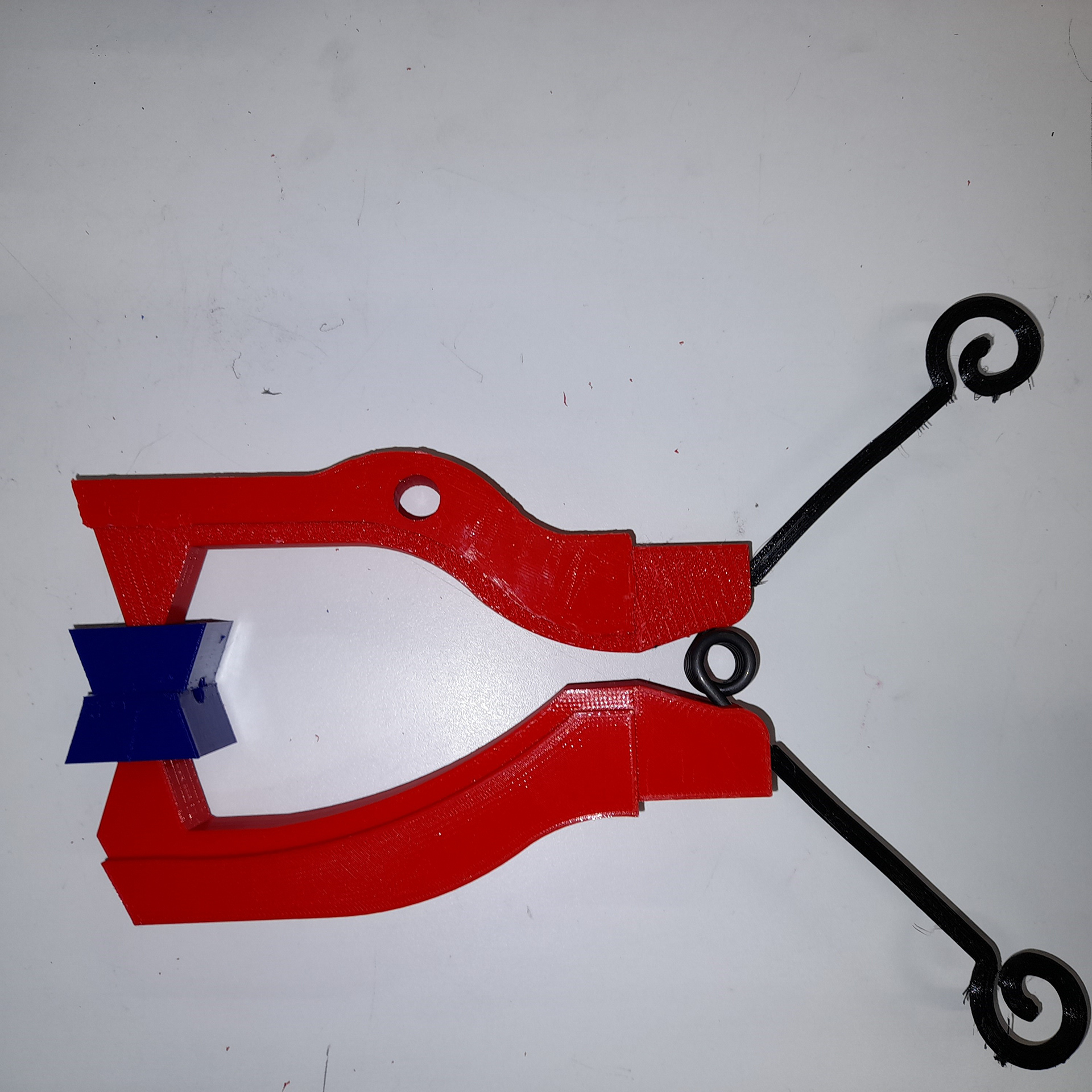

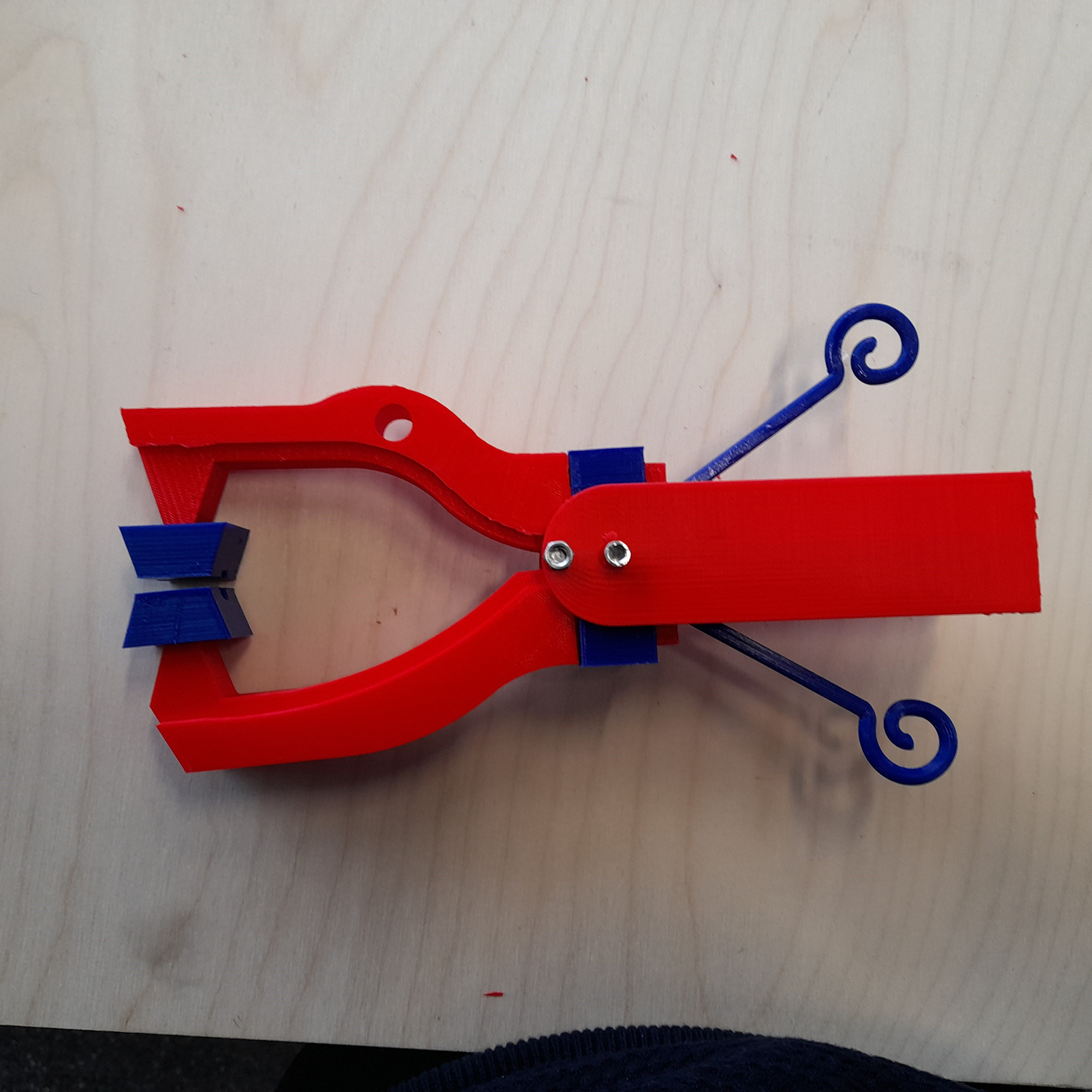
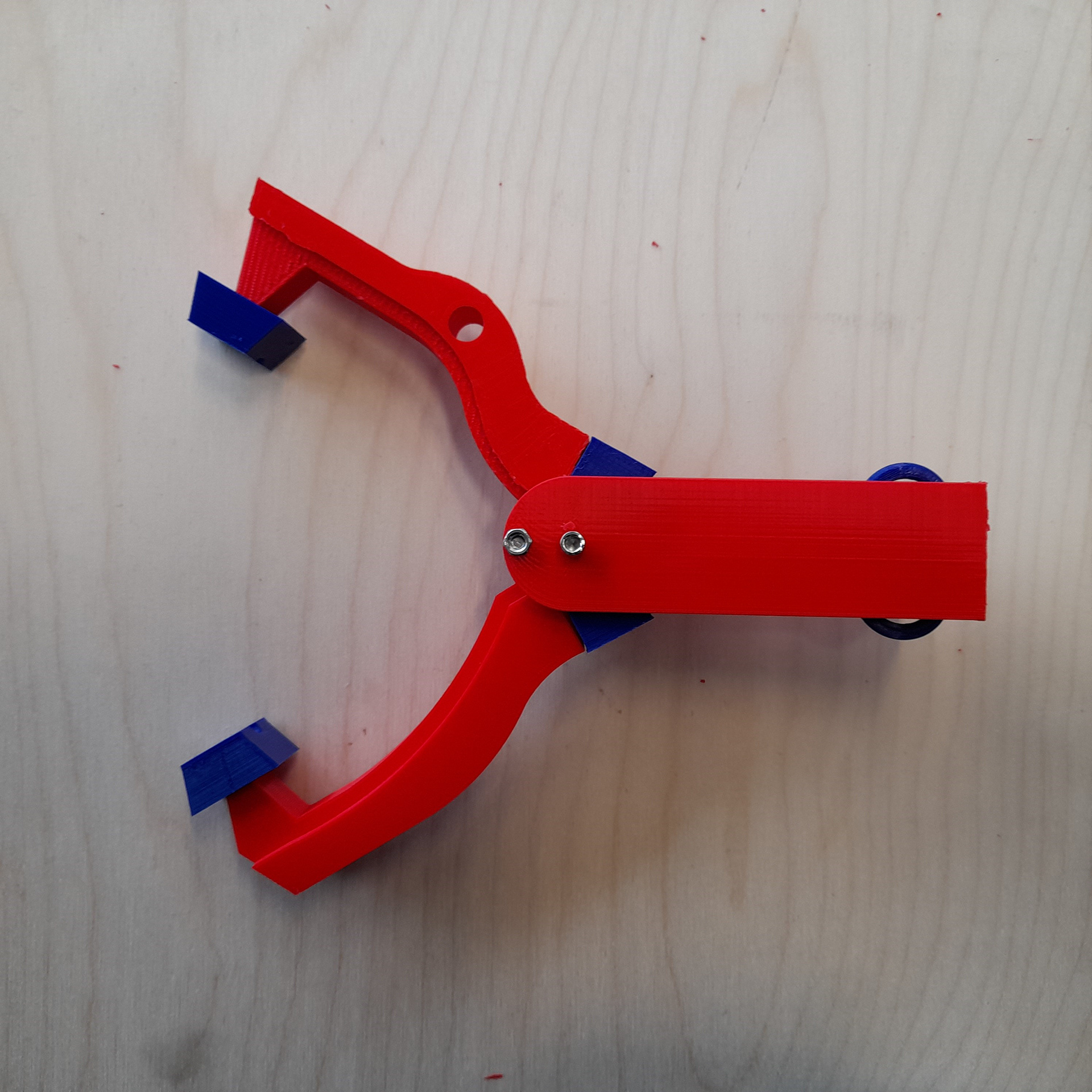
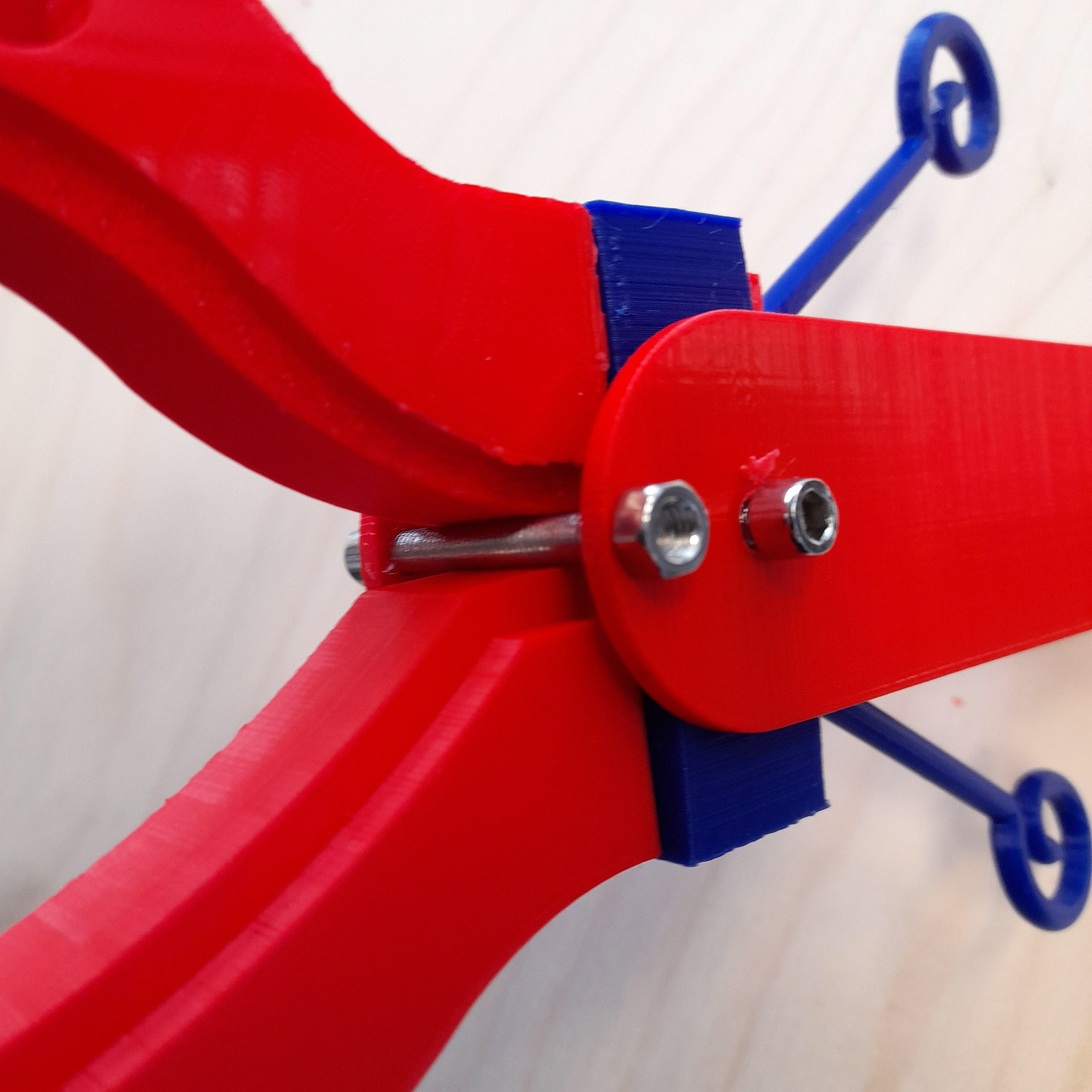


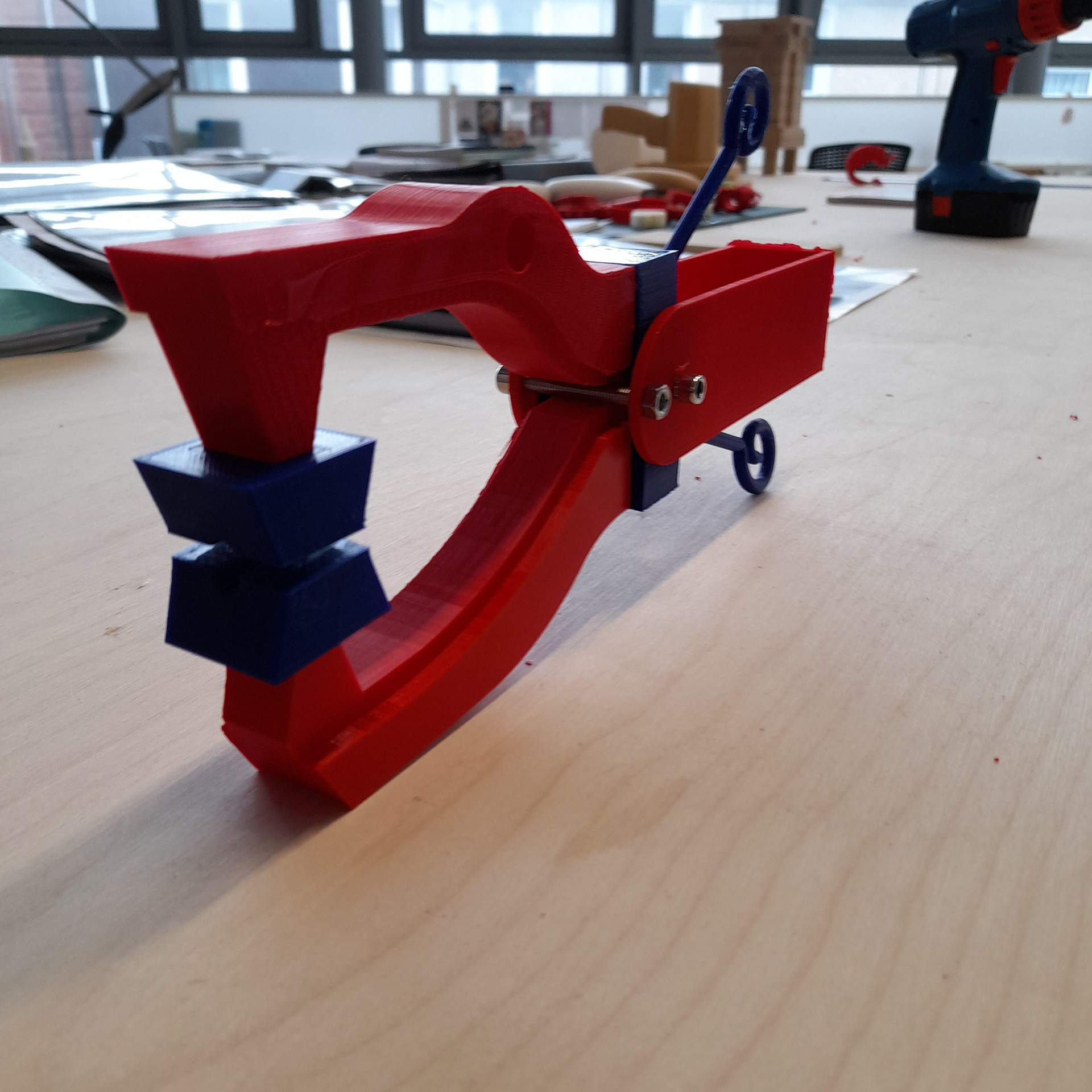
2nd Model
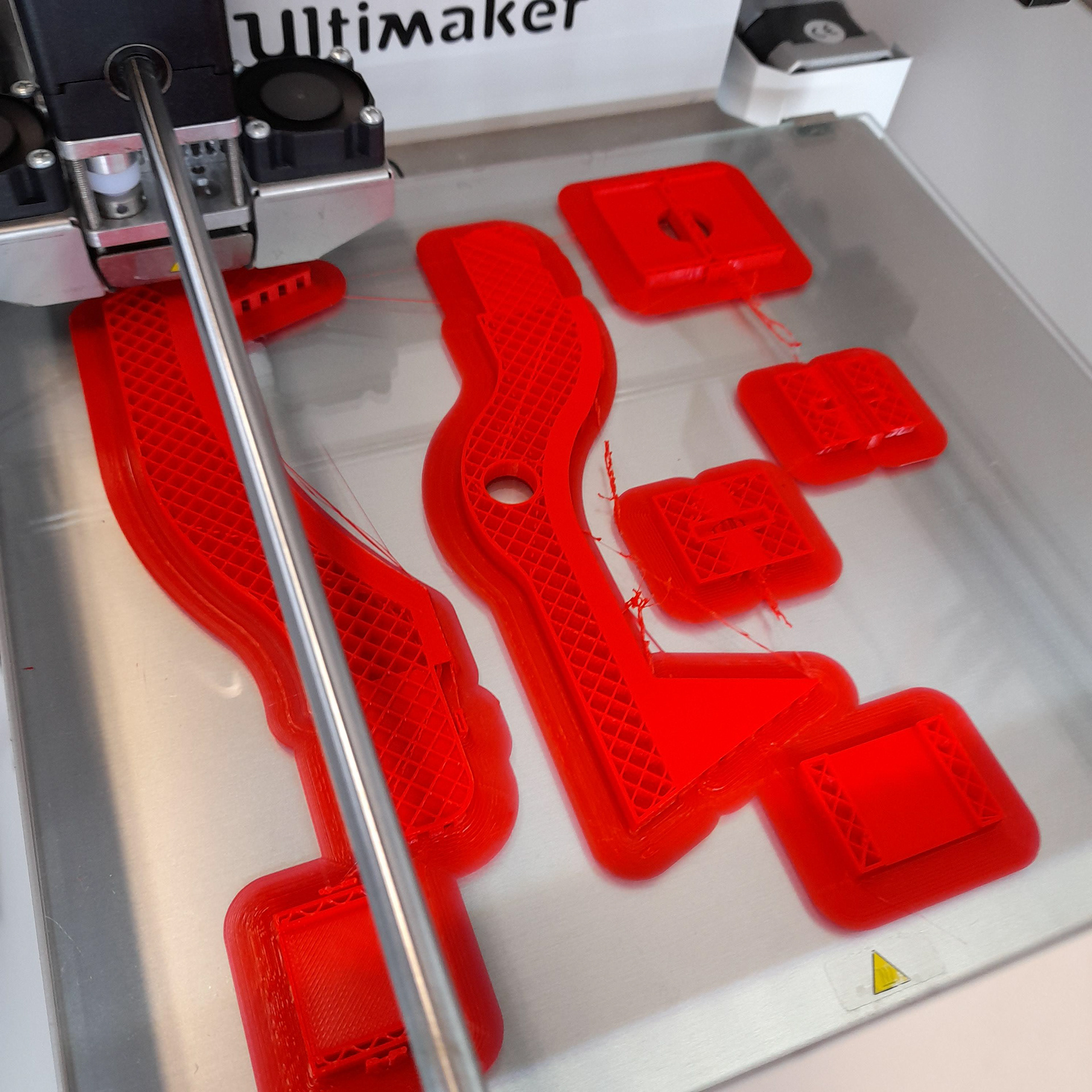



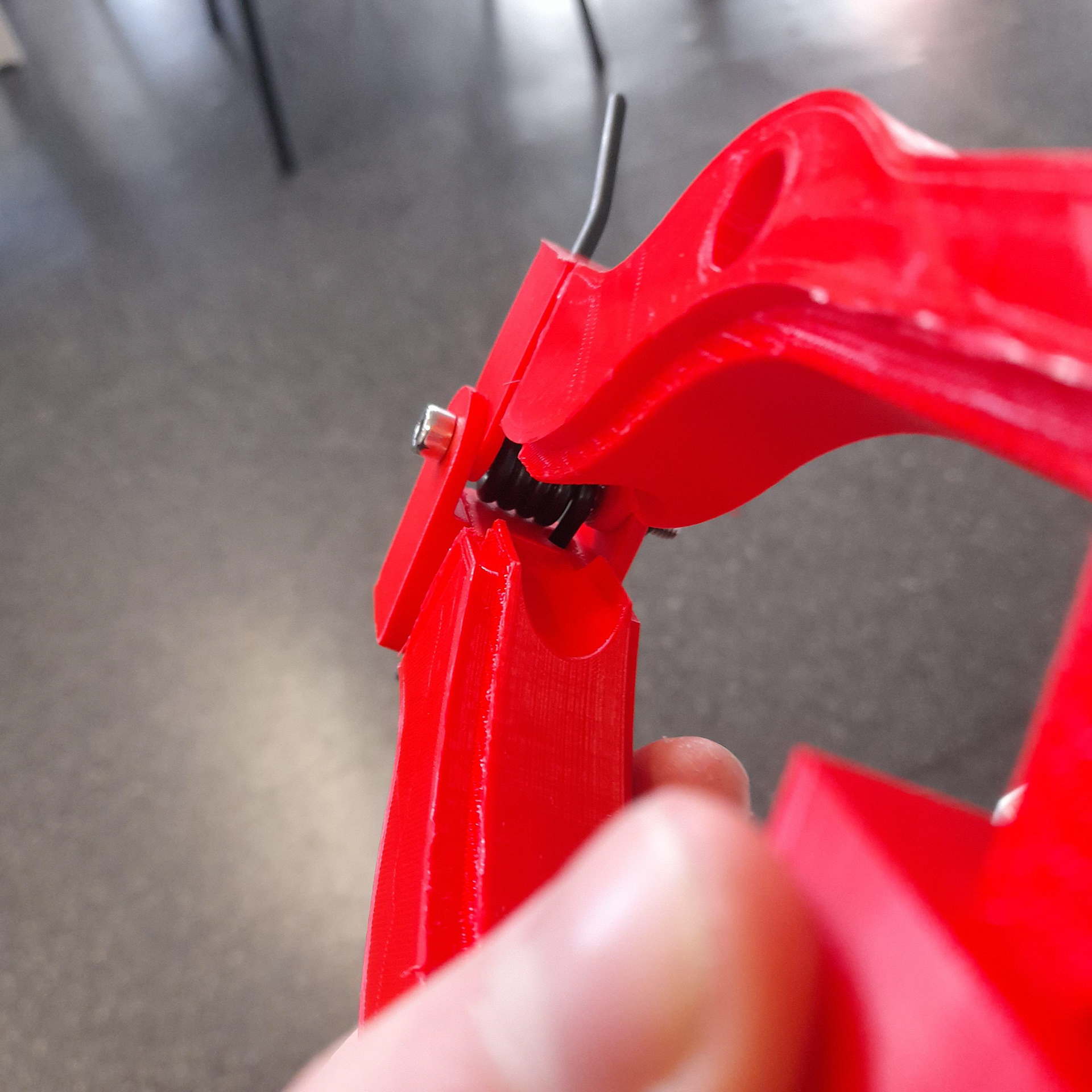
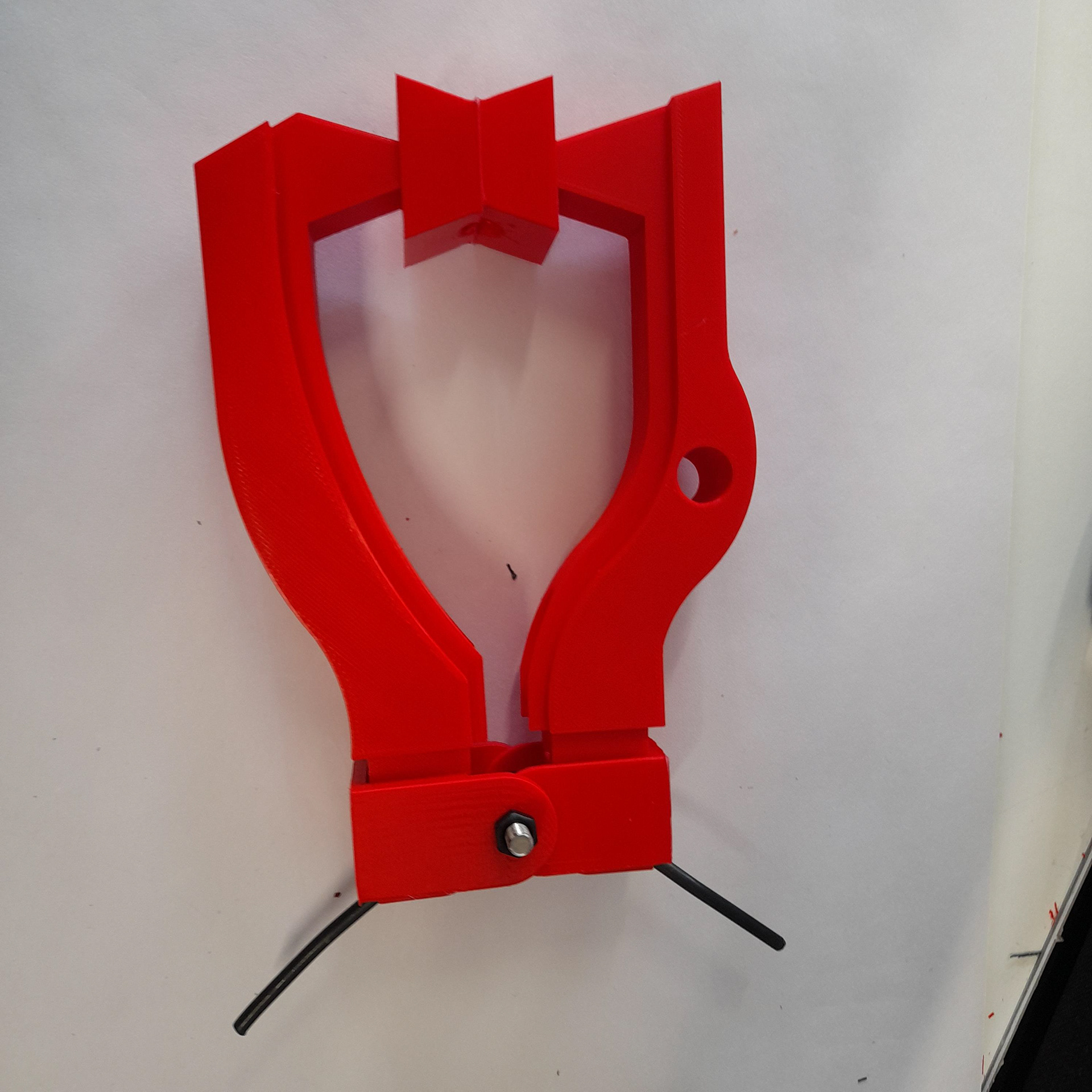




To find out if the overall shape or size of the whorl shape was ideal for staircases, I used a card and print template (which was to scale) to measure up with.

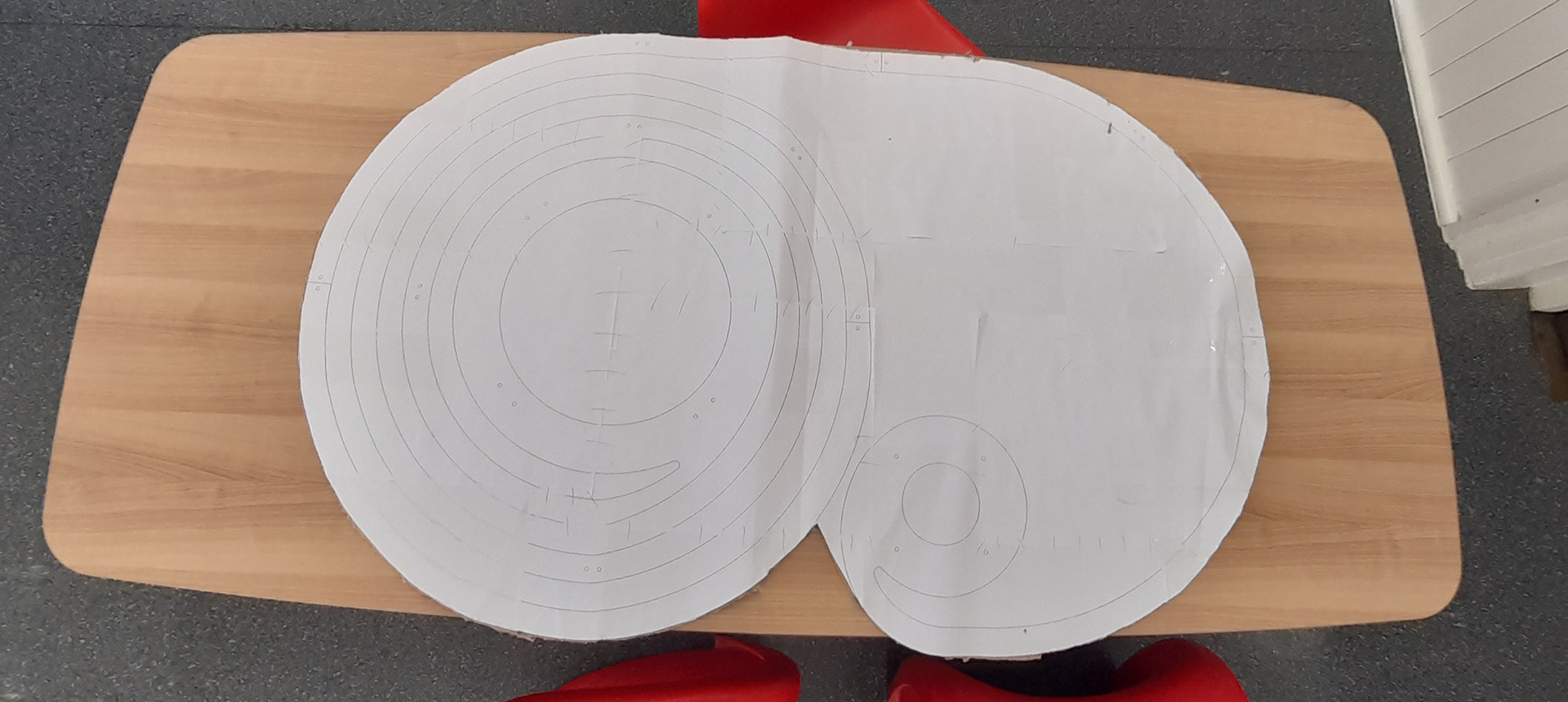

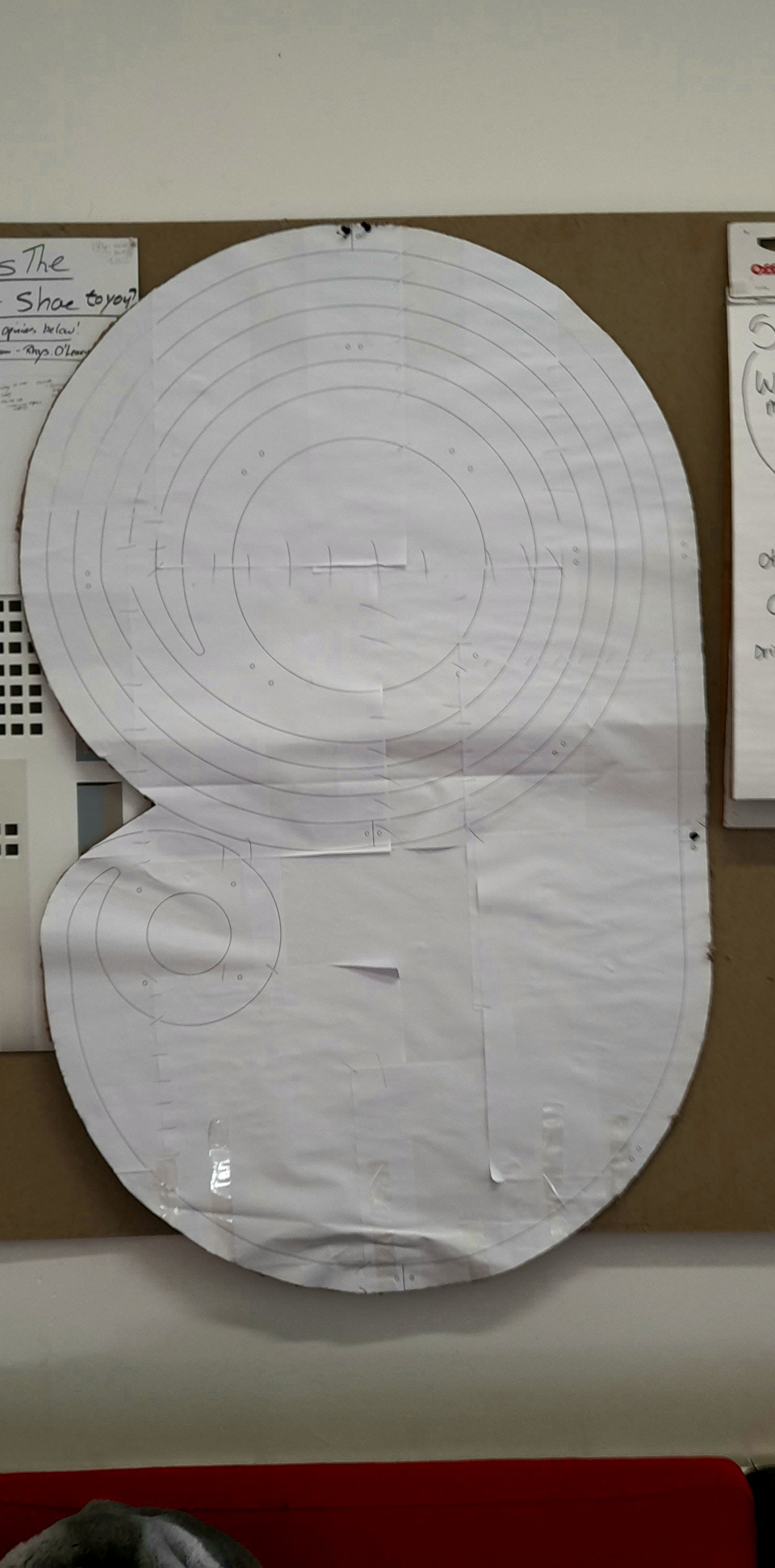


The first bulb and socket holder had a few minor issues so I had to reprint it again. Anyway, after comparing the size of the whorl to a staircase, I realised that I could shorten it down a bit. The reason being the shape seemed to be lacking in terms of how it visually holds itself. I edited the shape on cad and used influence from a shape of a keyring and the image of the amphisbaena from earlier on.
This new version of the whorl has more of a coherent look due to how the overlapping of the spirals creates a somewhat whole like effect as if nothing is left out but joined in unity. The shape is similar in comparison to how a fossiled shell looks which again has a connection with the purple shade/casing (shown in cad images) due to how that shade is made from shells. The smaller part makes it look as if it is not too large.
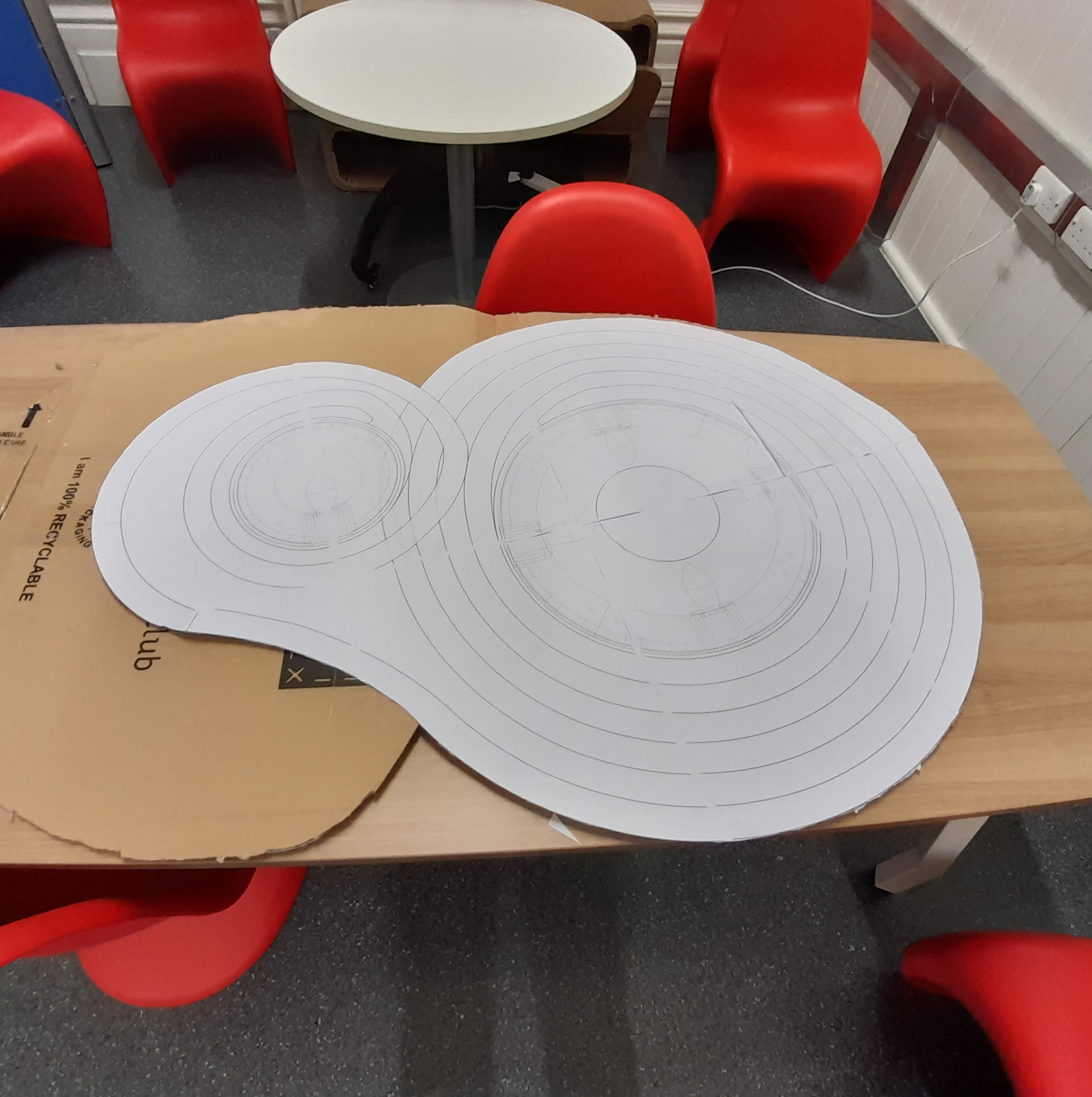
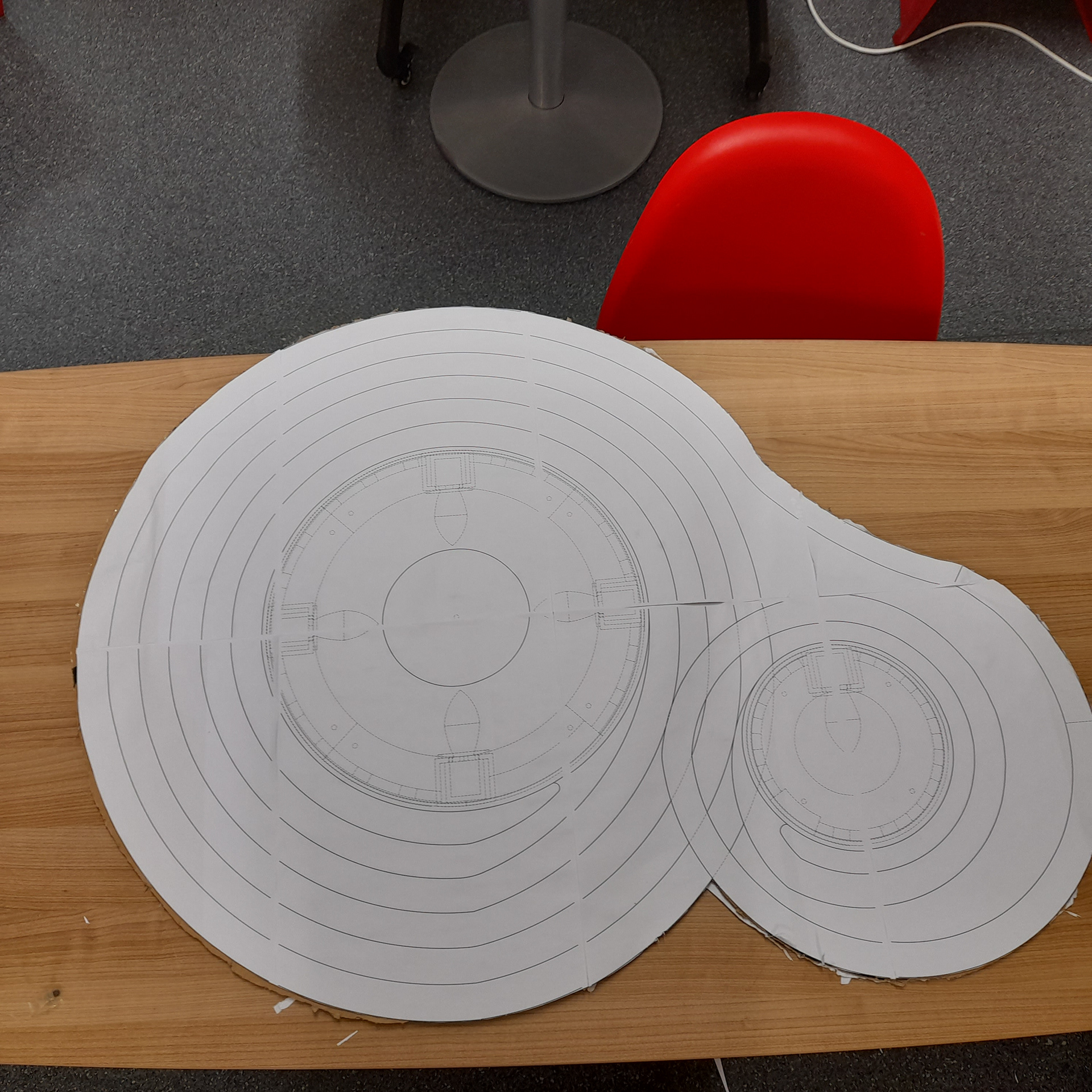

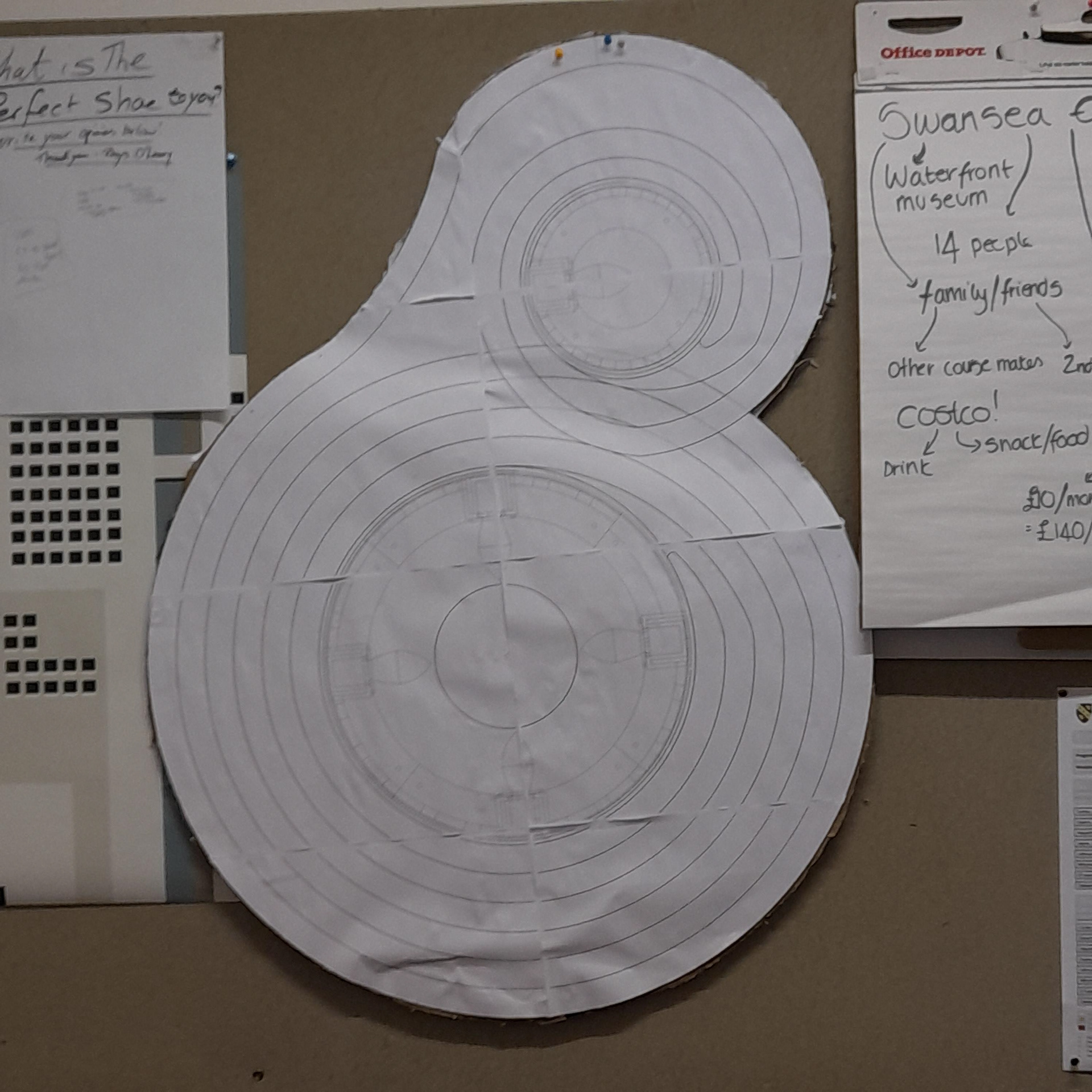

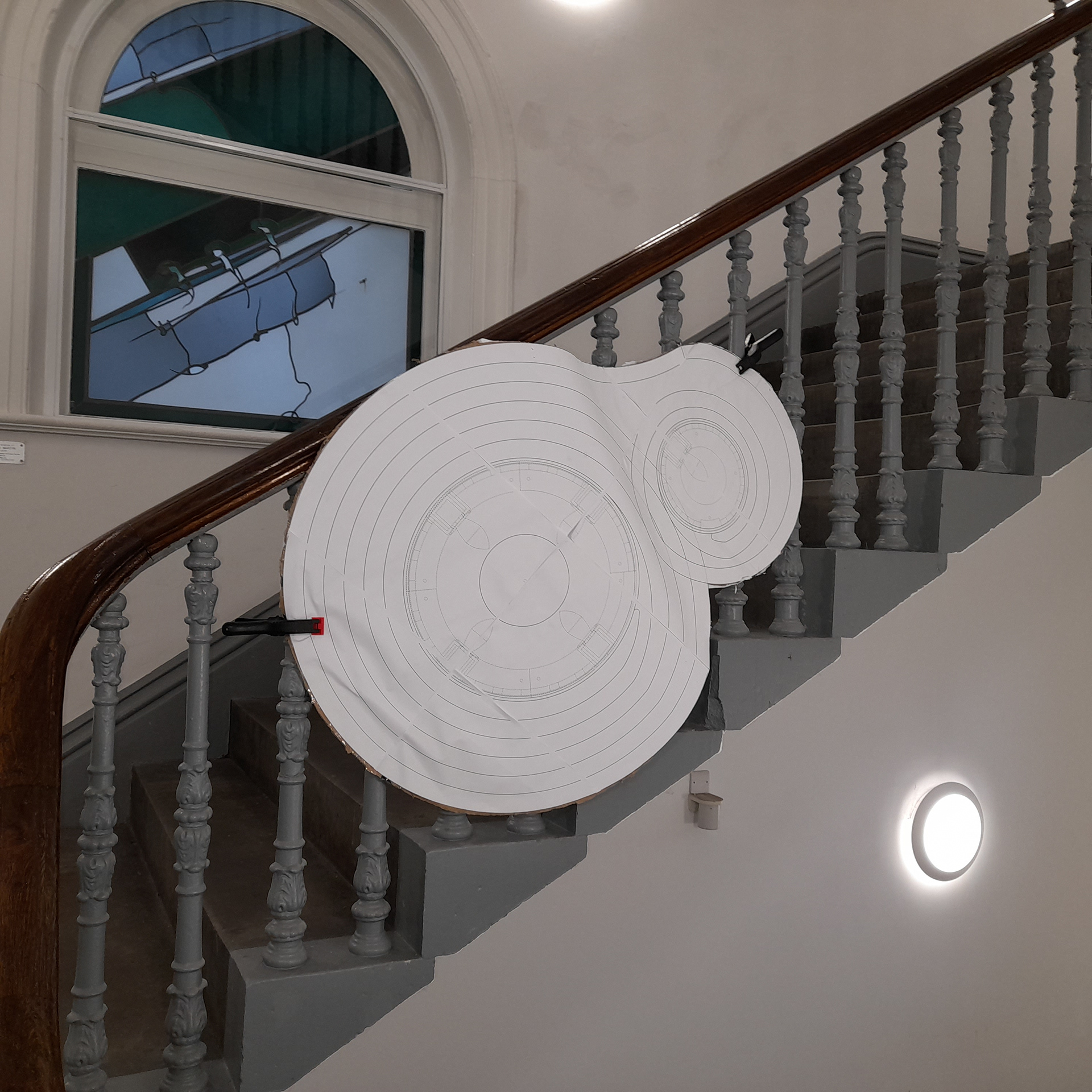
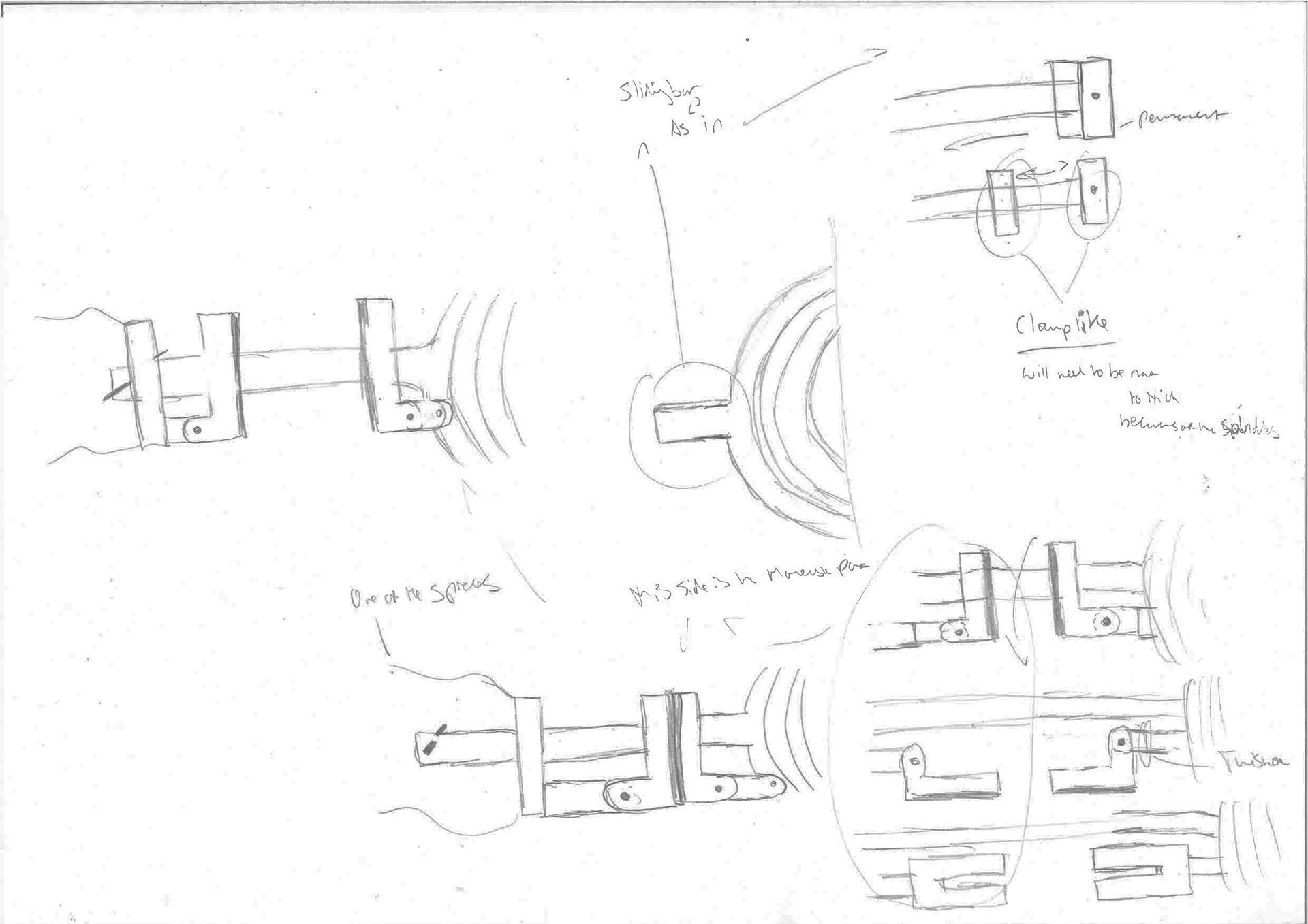
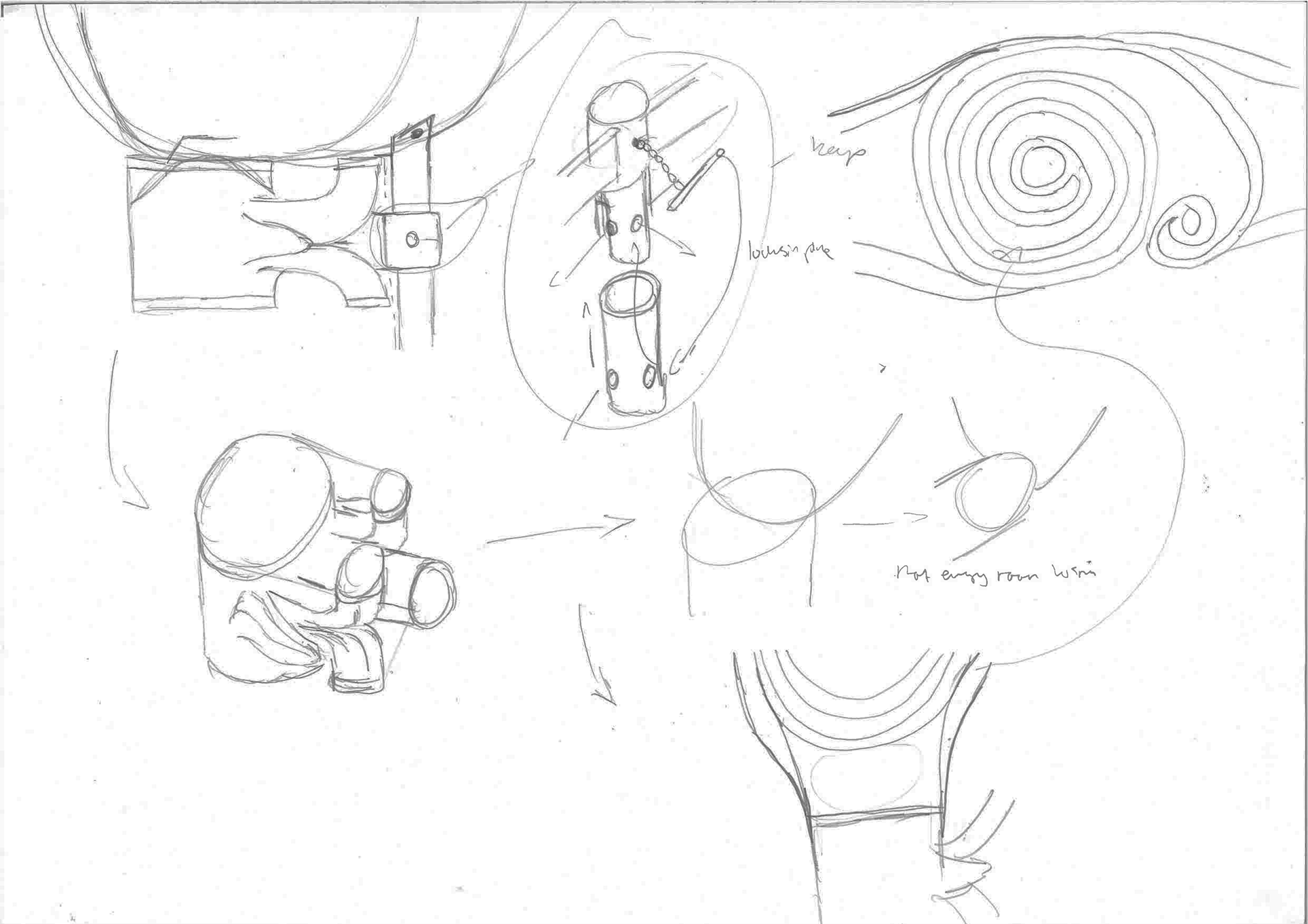

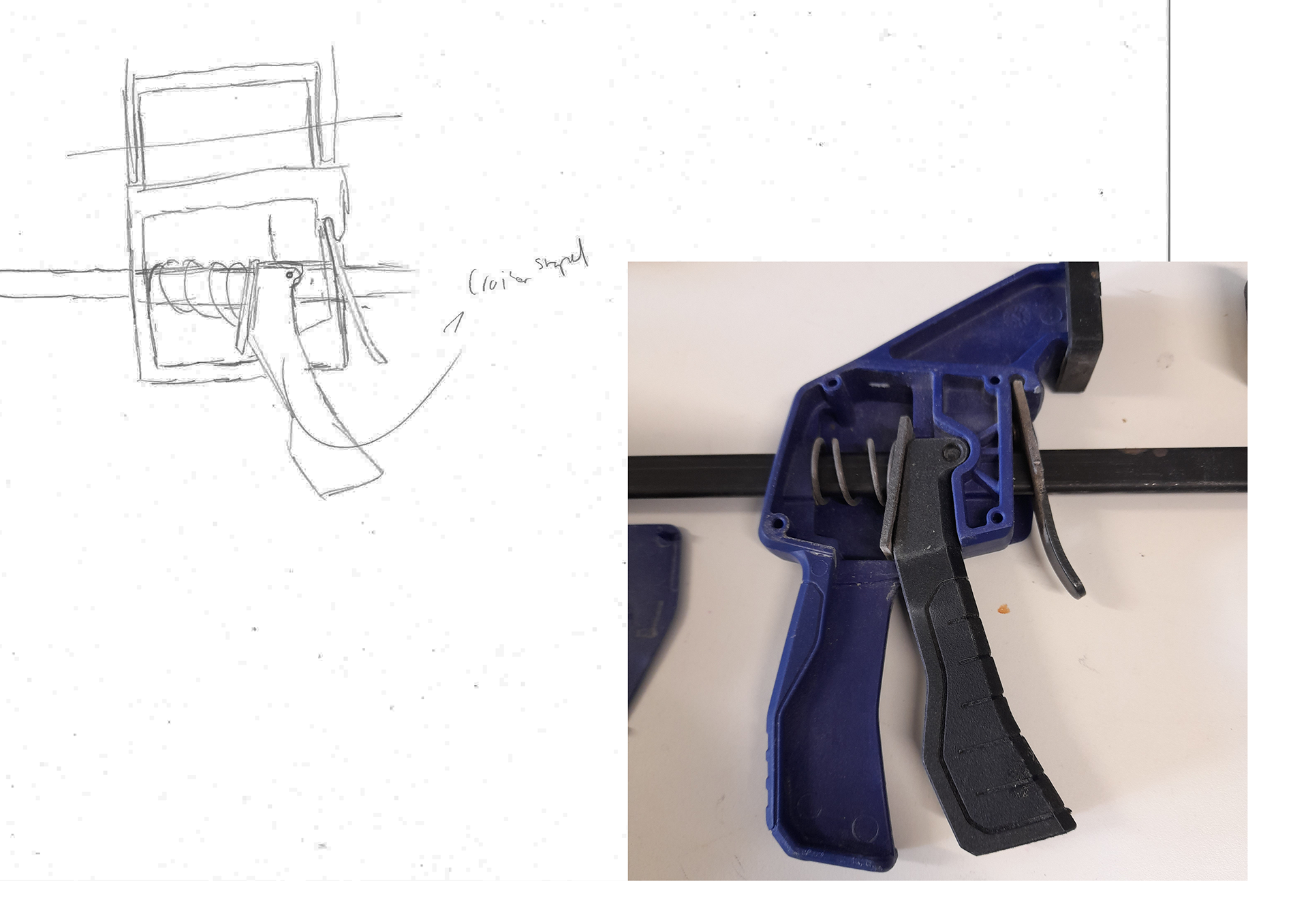


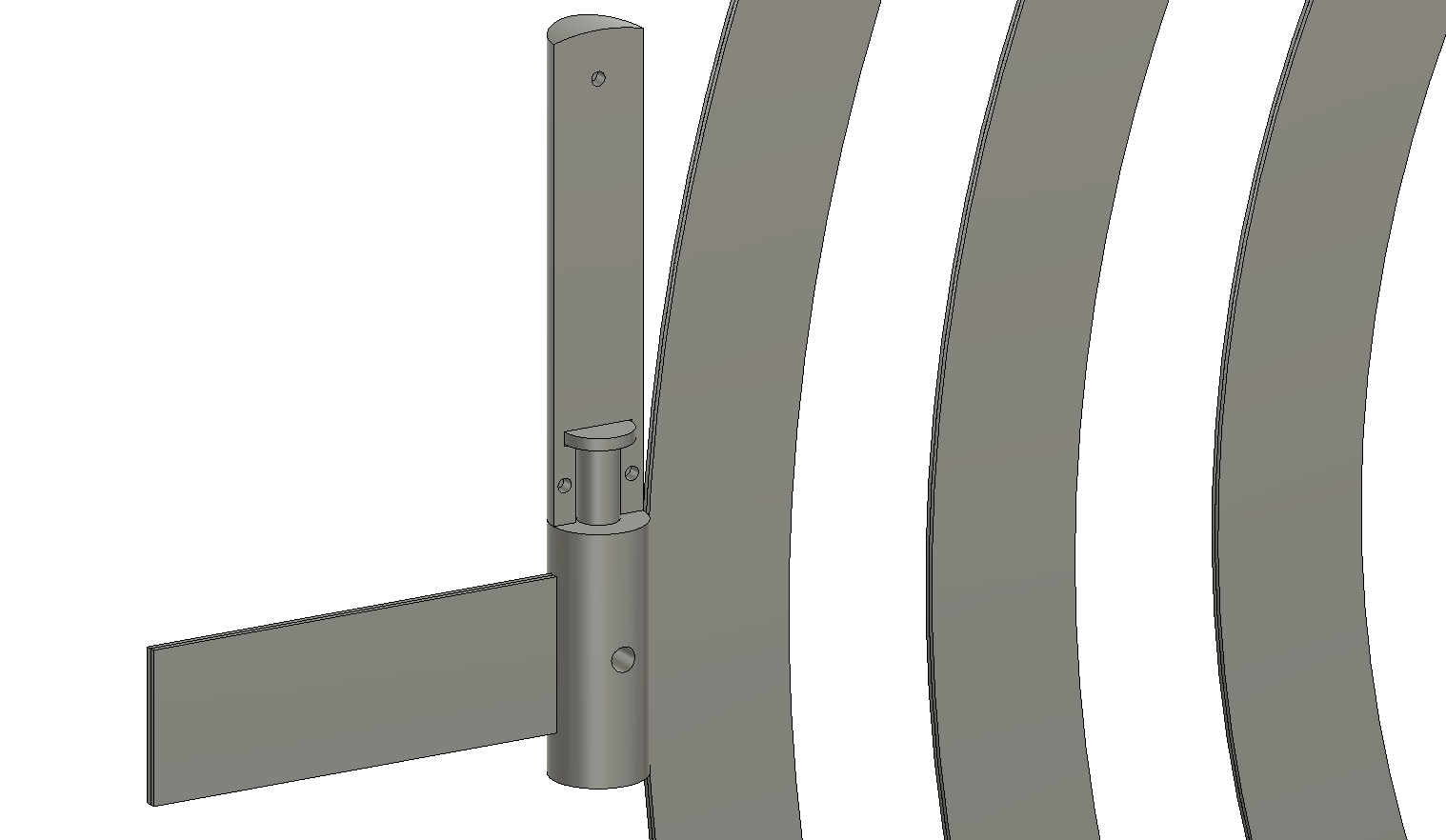
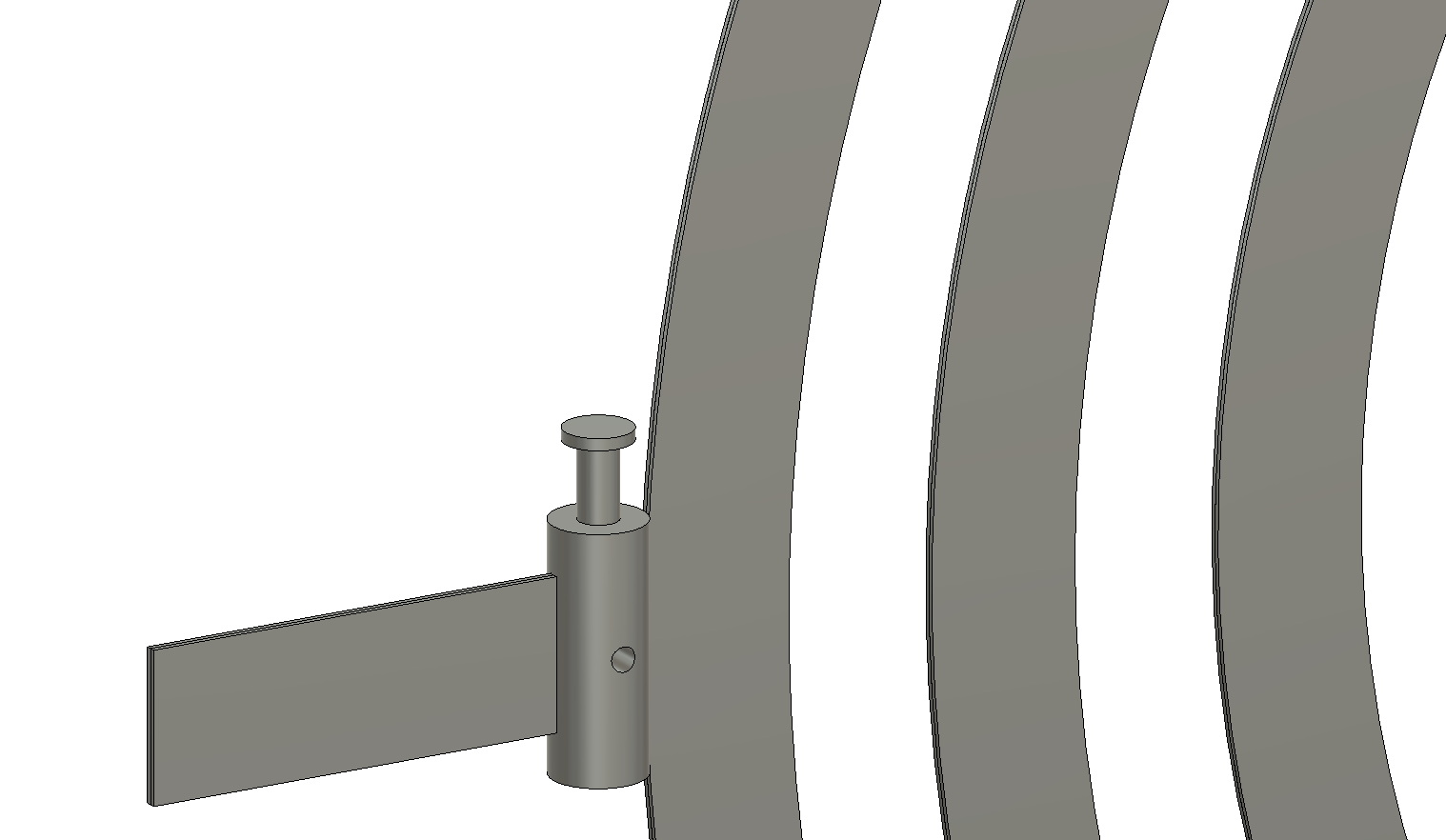
while the 2nd bulb/socket holder was being printed I directed my focus on figuring out the clamping system. although this seemed like s great idea at first I realised that the light was becoming too difficult and therefore a complete mess. I wasn't paying attention to what is needed as well as adding multiple features doesn't necessarily mean that they would be used. Therefore I made the choice of reevaluating the entire project. as in I aimed to make it more simple but without removing the shapes I have already used throughout the design. The effect of the spirals being placed through the spindles sounds great, yet it creates a hell of a mess and can be difficult or impossible depending on the distance between the spindles as well as height.
